

How to Write a Nursing Case Study Paper (A Guide)

Most nursing students dread writing a nursing case study analysis paper, yet it is a mandatory assignment; call it a rite of passage in nursing school. This is because it is a somewhat tricky process that is often overwhelming for nursing students. Nevertheless, by reading this guide prepared by our best nursing students, you should be able to easily and quickly write a nursing case study that can get you an excellent grade.
How different is this guide from similar guides all over the internet? Very different!
This guide provides all the pieces of information that one would need to write an A-grade nursing case study. These include the format for a nursing case study, a step-by-step guide on how to write a nursing case study, and all the important tips to follow when writing a nursing case study.
This comprehensive guide was developed by the top nursing essay writers at NurseMyGrade, so you can trust that the information herein is a gem that will catapult your grades to the next level. Expect updates as we unravel further information about writing a nursing case study.
Now that you know you’ve discovered a gold mine , let’s get right into it.
What Is a Nursing Case Study?
A nursing case study is a natural or imagined patient scenario designed to test the knowledge and skills of student nurses. Nursing case study assignments usually focus on testing knowledge and skills in areas of nursing study related to daily nursing practice.
As a nursing student, you must expect a nursing case study assignment at some point in your academic life. The fact that you are reading this post means that point is now.
While there is no standard structure for writing a nursing case study assignment, some things or elements must be present in your nursing assignment for your professor to consider it complete.
In the next section, you will discover what your instructor n expects in your nursing case study analysis. Remember, these are assignments where you are given a case study and are expected to write a case analysis report explaining how to handle such scenarios in real-life settings.
The Nursing Case Study Template
The typical nursing case study has nine sections. These are:
- Introduction
- Case presentation (Patient info, history, and medical condition)
- Diagnosis/Nursing assessment
- Intervention/Nursing care plan
- Discussion and recommendations
The Structure of a Nursing Case Study Analysis
You now know what nursing professors expect in a nursing case study analysis. In this section, we will explain what to include in each section of your nursing case study analysis to make it an excellent one.
1. Title page
The title page is essential in all types of academic writing. You must include it in your nursing case study analysis or any other essay or paper. And you must include it in the format recommended by your college.
If your college has no specific title page format, use the title page format of the style requested in the assignment prompt. In nursing college, virtually all assignments should be written in Harvard or APA format .
So, check your assignment prompt and create your title page correctly. The typical title page should include the topic of your paper, your name, the name of your professor, the course name, the date you are submitting the paper, and the name of your college.
2. Abstract
Most nursing professors require you to include an abstract in your nursing case study analysis. And even when you are not explicitly required to write one, it is good to do so. Of course, you should consult with your professor before doing so.
When writing an abstract for your paper, make sure it is about 200 words long. The abstract should include a brief summary of the case study, including all the essential information in the patient presentation, such as the history, age, and current diagnosis.
The summary should also include the nursing assessment, the current interventions, and recommendations.
3. Introduction
After writing the title page and the abstract, start writing the introduction. The introduction of a nursing case study analysis must briefly include the patient’s presentation, current diagnosis and medication, and recommendations. It must also include a strong thesis statement that shows what the paper is all about.
You shouldn’t just write an introduction for the sake of it. If you do so, your introduction will be bland. You need to put in good effort when writing your introduction. The best way to do this is to use your introduction to show you understand the case study perfectly and that you will analyze it right.
You can always write your introduction last. Many students do this because they believe writing an introduction last makes it more precise and accurate.
4. Case Presentation (Status of the Patient)
After introducing your nursing case study analysis, you should present the case where you outline the patient's status. It is usually straightforward to present a case.
You must paraphrase the patient scenario in the assignment prompt or brief. Focus on the demographic data of the patient (who they are, age, race, height, skin tone, occupation, relationships, marital status, appearance, etc.), why they are in the case study or scenario, reasons they sought medical attention, chief complaint, and current diagnosis and treatment. You should also discuss the actions performed on the patient, such as admission to the ICU, taking vital signs, recommending tests, etc.
In short, everything necessary in the patient scenario should be in your case presentation. You only need to avoid copying the patient scenario or case study word-for-word when writing your case presentation.
5. Diagnosis and Assessment
After the case presentation, you should explain the diagnosis. In other words, you should explain the condition, disease, or medical situation highlighted in the case presentation. For example, if the patient is a heavy smoker and he has COPD, it is at this point that you explain how COPD is linked to heavy smoking.
This is the section where you thoroughly discuss the disease process (pathophysiology) by highlighting the causes, symptoms, observations, and treatment methods. You should relate these to the patient’s status and give concrete evidence. You should describe the progression of the disease from when the client was admitted to a few hours or days after they were stabilized. Consider the first indication of the disease that prompted the patient to seek further medical assistance.
Your paper should also elucidate the diagnostic tests that should be conducted and the differential diagnosis. Ensure that each is given a well-founded rationale.
When explaining the condition, go deep into the pathophysiology. Focus specifically on the patient’s risk factors. Ensure you get your explanation from recent nursing literature (peer-reviewed scholarly journals published in the last 5 years). And do not forget to cite all the literature you get your facts from.
In short, this section should explain the patient’s condition or suffering.
6. Nursing Intervention
After the diagnosis and nursing assessment section, your nursing case study analysis should have an intervention section. This section is also known as the nursing care planning section. What you are supposed to do in this section is to present a nursing care plan for the patient presented in the patient scenario. You should describe the nursing care plan and goals for the patient. Record all the anticipated positive changes and assess whether the care plan addresses the patient's condition.
A good nursing care plan details the patient’s chief complaints or critical problems. It then describes the causes of these problems using evidence from recent medical or nursing literature. It then details the potential intervention for each problem. Lastly, it includes goals and evaluation strategies for the measures. Most professors, predominantly Australian and UK professors, prefer if this section is in table format.
Some nursing professors regard the intervention section (or nursing care plan section) as the most critical part of a nursing case study. This is because this part details precisely how the student nurse will react to the patient scenario (which is what the nursing professors want to know). So, ensure you make a reasonable effort when developing this section to get an excellent grade.
7. Discussion and Recommendations
The intervention section in a nursing case study is followed by a discussion and recommendations section. In this section, you are supposed to expound on the patient scenario, the diagnosis, and the nursing care plan. You should also expound on the potential outcomes if the care plan is followed correctly. The discussion should also explain the rationale for the care plan or its significant bits.
Recommendations should follow the discussion. Recommendations usually involve everything necessary that can be done or changed to manage a patient’s condition or prevent its reoccurrence. Anything that enhances the patient’s well-being can be a recommendation. Just make sure your key recommendations are supported by evidence.
8. Conclusion
This is the second last section of a typical nursing case study. What you need here is to summarize the entire case study. Ensure your summary has at least the case presentation, the nursing assessment/diagnosis, the intervention, and the key recommendations.
At the very end of your conclusion, add a closing statement. The statement should wrap up the whole thing nicely. Try to make it as impressive as possible.
9. References
This is the last section of a nursing case study. No nursing case study is complete without a references section. You should ensure your case study has in-text citations and a references page.
And you should make sure both are written as recommended in the assignment. The style section is usually Harvard or APA. Follow the recommended style to get a good grade on your essay.
Step-By-Step Guide to Writing a Nursing Case Study
You know all the key sections you must include in a nursing case study. You also know what exactly you need to do in each section. It is time to learn how to write a nursing case study. The process detailed below should be easy to follow because you know the typical nursing case study structure.
1. Understand the Assignment
When given a nursing case study assignment, the first thing you need to do is to read. You need to read two pieces of information slowly and carefully.
First, you need to read the prompt itself slowly and carefully. This is important because the prompt will have essential bits of information you need to know, including the style, the format, the word count, and the number of references needed. All these bits of information are essential to ensure your writing is correct.
Second, you need to read the patient scenario slowly and carefully. You should do this to understand it clearly so that you do not make any mistakes in your analysis.
2. Create a Rough Outline
Failure to plan is a plan to fail. That is not what you are in it for anyway! In other words, do not fail to create an outline for your case study analysis. Use the template provided in this essay to create a rough outline for your nursing case study analysis.
Ensure your outline is as detailed as it can be at this stage. You can do light research to achieve this aim. However, this is not exactly necessary because this is just a rough outline.
3. Conduct thorough research
After creating a rough outline, you should conduct thorough research. Your research should especially focus on providing a credible and evidence-based nursing assessment of the patient problem(s). You should only use evidence from recent nursing or medical literature.
You must also conduct thorough research to develop an effective intervention or nursing care plan. So when researching the patient’s problem and its diagnosis, you should also research the most suitable intervention or do it right after.
When conducting research, you should always note down your sources. So for every piece of information you find, and what to use, you should have its reference.
After conducting thorough research, you should enhance your rough outline using the new information you have discovered. Make sure it is as comprehensive as possible.
4. Write your nursing case study
You must follow your comprehensive outline to write your case study analysis at this stage. If you created a good outline, you should find it very easy to write your nursing case study analysis.
If you did not, writing your nursing case study will be challenging. Whenever you are stuck writing your case study analysis paper, you should re-read the part where we explain what to include in every section of your analysis. Doing so will help you know what to write to continue your essay. Writing a nursing case study analysis usually takes only a few hours.
5. Reference your case study
After writing your case study, ensure you add all in-text citations if you have not already. And when adding them, you should follow the style/format recommended in the assignment prompt (usually APA or Harvard style).
After adding in-text citations exactly where they need to be and in the correct format, add all the references you have used in a references page. And you should add them correctly as per the rules of the style you were asked to use.
Do not forget to organize your references alphabetically after creating your references page.
6. Thoroughly edit your case study
After STEP 5 above, you need to edit your case study. You should edit it slowly and carefully. Do this by proofreading it twice. Proofread it slowly each time to discover all the grammar, style, and punctuation errors. Remove all the errors you find.
After proofreading your essay twice, recheck it to ensure every sentence is straightforward. This will transform your ordinary case study into an A-grade one. Of course, it must also have all the standard sections expected in a case study.
Recheck your case study using a grammarly.com or a similar computer grammar checker to ensure it is perfect. Doing this will help you catch and eliminate all the remaining errors in your work.
7. Submit your case study analysis
After proofreading and editing your case study analysis, it will be 100% ready for submission. Just convert it into the format it is required in and submit it.
Nursing Case Study Tips and Tricks
The guide above and other information in this article should help you develop a good nursing case study analysis. Note that this guide focuses entirely on nursing case scenario-based papers, not research study-based nursing case studies. The tips and tricks in this section should help you ensure that the nursing case study analysis you create is excellent.
1. Begin early
The moment you see a nursing case study assignment prompt, identify a date to start writing it and create your own deadline to beat before the deadline stated in the prompt.
Do this and start writing your case study analysis early before your deadline. You will have plenty of time to do excellent research, develop an excellent paper, and edit your final paper as thoroughly as you want.
Most student nurses combine work and study. Therefore, if you decide to leave a nursing case study assignment until late to complete it, something could come up, and you could end up failing to submit it or submitting a rushed case study analysis.
2. Use the proper terminology
When writing an essay or any other academic paper, you are always encouraged to use the most straightforward language to make your work easy to understand. However, this is not true when writing a nursing case study analysis. While your work should certainly be easy to understand, you must use the right nursing terminology at every point where it is necessary. Failure to do this could damage your work or make it look less professional or convincing.
3. Avoid copying and pasting
If you are a serious nursing student, you know that copying and pasting are prohibited in assignments. However, sometimes copying and pasting can seem okay in nursing case studies. For example, it can seem okay to copy-paste the patient presentation. However, this is not okay. You are supposed to paraphrase the verbatim when presenting the patient presentation in your essay. You should also avoid copy-pasting information or texts directly. Every fact or evidence you research and find should be paraphrased to appear in your work. And it should be cited correctly.
4. Always ask for help if stuck
This is very important. Students are usually overwhelmed with academic work, especially a month or two to the end of the semester. If you are overwhelmed and think you will not have the time to complete your nursing case study analysis or submit a quality one, ask for help. Ask for help from a nursing assignment-help website like ours, and you will soon have a paper ready that you can use as you please. If you choose to get help from us, you will get a well-researched, well-planned, well-developed, and fully edited nursing case study.
5. Format your paper correctly
Many students forget to do proper formatting after writing their nursing case study analyses. Before you submit your paper, make sure you format it correctly. If you do not format your paper correctly, you will lose marks because of poor formatting. If you feel you are not very confident with your APA or Harvard formatting skills, send your paper to us to get it correctly formatted and ready for submission.
Now that you are all set up …
Our company has been among the best-rated nursing homework help companies in the last few years. Thousands of students have benefitted from our many academic writing guides. Many more have benefitted from direct help given by our experts.
- How to write a nursing philosophy statement.
- Writing an abstract poster presentation.
We have experienced nursing experts available every day of the week to provide nursing assignment help. They can easily research and write virtually any nursing assignment, including a nursing case study. So, if the information provided in this article isn’t making you feel any optimistic about writing an excellent nursing case study, get help from us.
Get help by ordering a custom nursing case study through this very website. If you do so, you will get a 100% original paper that is well-researched, well-written, well-formatted, and adequately referenced. Since the paper is original, you can use it anywhere without problems.
Thousands of students trust our company every week, month, and year. Be like them! Trust us for 100% confidentiality and speedy delivery.
Struggling with
Related Articles

How to Write a Policy Analysis Paper : A Nursing/Med Student Guide

How to Create an Effective Poster Presentation (A Nurse Student’s Guide)

iHuman Tips and Tricks for Success
NurseMyGrades is being relied upon by thousands of students worldwide to ace their nursing studies. We offer high quality sample papers that help students in their revision as well as helping them remain abreast of what is expected of them.
- General Nursing
- Nursing Specialties
- Nursing Students
- United States Nursing
- World Nursing
- Boards of Nursing
- Breakroom / Clubs
- Nurse Q&A
- Student Q&A
- Fastest BSN
- Most Affordable BSN
- Fastest MSN
- Most Affordable MSN
- Best RN to BSN
- Fastest RN to BSN
- Most Affordable RN to BSN
- Best LPN/LVN
- Fastest LPN/LVN
- Most Affordable LPN/LVN
- Fastest DNP
- Most Affordable DNP
- Medical Assistant
- Best Online Medical Assistant
- Best Accelerated Medical Assistant
- Most Affordable Medical Assistant
- Nurse Practitioner
- Pediatric NP
- Neonatal NP
- Oncology NP
- Acute Care NP
- Aesthetic NP
- Women's Health NP
- Adult-Gerontology NP
- Emergency NP
- Best RN to NP
- Psychiatric-Mental Health NP
- RN Specialties
- Best RN Jobs and Salaries
- Aesthetic Nurse
- Nursing Informatics
- Nurse Case Manager
- Forensic Nurse
- Labor and Delivery Nurse
- Psychiatric Nurse
- Pediatric Nurse
- Travel Nurse
- Telemetry Nurse
- Dermatology Nurse
- Best NP Jobs and Salaries
- Family NP (FNP)
- Orthopedic NP
- Psychiatric-Mental Health NP (PMHNP)
- Nurse Educator
- Nurse Administrator
- Certified Nurse Midwife (CNM)
- Clinical Nurse Specialist (CNS)
- Certified Registered Nurse Anesthetist (CRNA)
- Best Free Online NCLEX-RN Study Guide
- The Nursing Process
- Question Leveling
- NCLEX-RN Question Identification
- Expert NCLEX-RN Test-Taking Strategies
- Best Scrubs for Nurses
- Best Shoes for Nurses
- Best Stethoscopes for Nurses
- Best Gifts for Nurses
- Undergraduate
- How to Become an LPN/LVN
- How to Earn an ADN
- Differences Between ADN, ASN, AAS
- How to Earn a BSN
- Best MSN Concentrations
- Is an MSN Worth It?
- How to Earn a DNP
- MSN vs. DNP
Nursing Case Studies: Diagnosis, Rationales, Fundamentals
Test your knowledge and clinical investigative skills in trying to diagnose what is going on with the patients presented in each of the Case Study Investigations. Can you come up with the right diagnosis? Case Studies Articles

Case Study: Child With Altered Mental Status
In this Case Study, an 11-year-old child with autism presents by ambulance to the children's hospital with altered mental status, bizarre behavior and fever....
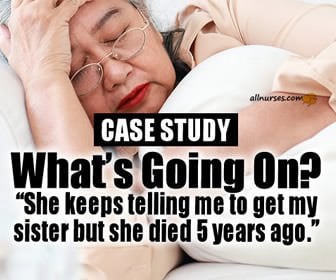
Four Days of Nausea, Vomiting and Fever
What is most important in this case study in which an older Vietnamese woman presents to the ER with fever, nausea and vomiting?

I'm Dizzy, Tired and Can't Remember What I Ate for Lunch
A 74-year-old white male presents to the ED with confusion, fatigue, dizziness, headache and distal right arm paresthesia. Experienced nurses, model your...

Agonizing Pelvic Pain: What's Going On with this 17-year-old? | Ca…
A new case study in which the patient, a 17-yr-old African American female, is having ongoing, excruciating pelvic pain. This case study is based upon the very...

A Fracture from a Fall: What's Going on Here?
A new case study in which a 77 yo white female arrives to the emergency room by taxi with a suspected skull fracture. This topic was suggested by a reader –...

Breathless, Coughing and Run-down: What's Going On? | Case Study
A new case study in which the patient, a 32-yr-old white male presents to a local free clinic with fatigue, moderate dyspnea, and a persistent and...

Suicidal Ideation and Muscle Twitches | Case Study
A new case study in which the patient, a 40 yr-old mixed-race woman presents to her primary care physician with concerns about suicidal ideation. She has some...

Unexplained Diarrhea and Weight Loss: What's going on? | Case Stud…
A new case study in which the patient, a 28 y/o white female presents to a primary care clinic complaining of recurrent diarrhea. She first experienced diarrhea...

Repeat After Me... What's the problem here? | Case Study
A homeless man is brought to the ER by the local police after he is found sitting at a bus stop with a bloody rag pressed to his left knee. The temperature...

Wild Mood Swings and Outbursts of Anger: What's Wrong with this M…
A new case study in which the patient, a 50-yr-old male of mixed race visits his primary care physician with concerns about wild mood swings and outbursts of...
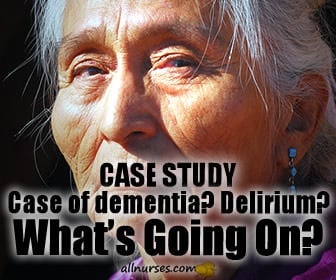
Case Study: Does this Cherokee Woman Have Dementia?
An 85-yr-old Cherokee woman living in a skilled nursing facility has lost weight since admission and won’t socialize or join in activities. She won't...

Case Study: It's a Lump, but is it Breast Cancer?
I am so excited about this Case Study because I feel it will be useful to so many of you! Welcome to a new Case Study in which the patient, a 45-yr-old, white,...

Case Study: Newborn with Vomiting and Diarrhea
A three-day old male infant is brought to the ER by his 22-yr-old mother with vomiting and diarrhea. Diagnostic results will be released upon request, with the...

Case Study: Joint Pain, Rash, Hair Loss - What's Going On?
A new case study in which R.W. presents to her PCP with a cough, mild fever, joint stiffness and pain and a history of rashes, anemia and hair loss.

Case Study: An OB Catastrophe
The following is a case simulation involving a patient initially encountered in Labor and Delivery. While the initial encounter occurred in a specific setting,...

Differential Case Study: Lyme Disease or Covid-19?
Lakeith, a 35-year-old black man living in New York State, presents with a fever of 101 degrees F. He is concerned he might have contracted Covid-19. Based upon...

Case Study: Sudden Severe Pain
A new case study in which the patient, D.C., a 52-year-old, white, married college professor wakes up to severe and intensifying pain. Though the coronavirus...

Case Study: Unexplained Bruises
Karen brings her daughter, Ann into the pediatric clinic stating, "She's just been so tired lately. All she wants to do is sleep and she’s got no appetite....

Case Study: What's Causing This Cough?
A new case study in which the patient, H.T. an 82-year-old Hispanic man presents to his primary care clinic with cough, malaise and confusion. How well do you...

Case Study(CSI): Stomach flu? Anxiety? What's Going on Here?
A new case study in which the patient, A.W. a 65-year-old African American woman presents to her primary care clinic with unspecified complaints. She told the...

Case Study: I'm too tired to walk the dog...
A new case study in which the patient, T.K. a 51-year-old woman who has finally taken a staycation, doesn’t have enough energy to walk her dog. You’re the...

Case Study: My Stomach Hurts
It's late in the day on a beautiful Saturday in late summer. You are finishing up your shift at a local urgent care clinic when a 28-year-old, white male comes...

Case Study: Trust Your Gut? A Fecal Transplant Could Change Your L…
Fecal Microbial Transplant (FMT) is a well-accepted practice for the treatment of C. diff, however in the U.S. it is still typically used only after multiple...

Case Study: Magic Mushrooms as Medicine? Mind-Body Connection Pt. …
Can "tripping" cure depression? Can LSD reduce chronic anxiety? This article explores the use of psychedelics to treat mental illness. Read on to find links for...

Case Study: Does Childhood Abuse Prevent Weight Loss? Pt. 2
This is an important topic for nurses. We need to understand the connection between childhood trauma and mind/body issues to build trust with patients and...

Step-By-Step Guide to Writing a Nursing Case Study
You now know all the key sections you need to include in a nursing case study. You also know what exactly you need to do in each section. It is now time to know how exactly to write a nursing case study. The process detailed below should be easy to follow because you now know the typical structure of nursing case studies.
When given a nursing case study assignment, the first thing you need to do is to read. You need to read two pieces of information slowly and carefully.
First, you need to read the prompt itself slowly and carefully. This is important because the prompt will have important bits of information that you need to know, including the style, the format, the word count, and the number of references needed. All these bits of information are important to know to ensure what you are writing is the right thing.
Second, you need to read the patient scenario slowly and carefully. You should do this to understand it clearly so that you do not make any mistakes in your analysis.
- Create a rough outline
Failure to plan is a plan to fail. So do not fail to plan. In other words, do not fail to create an outline for your case study analysis. Use the template provided in this essay to create a rough outline for your nursing case study analysis.
Make sure your outline is as detailed as it can be at this stage. You can do light research to achieve this aim. However, this is not exactly necessary because this is just a rough outline.
- Conduct thorough research
After creating a rough outline, you should conduct thorough research. Your research should especially focus on providing a credible and evidence-based nursing assessment on the patient problem(s). The evidence you should use should only be from recent nursing or medical literature.
You will also need to conduct thorough research to come up with an effective intervention or nursing care plan. So when researching the patient’s problem and its diagnosis, you should also research the most suitable intervention or you should do it right after.
When conducting research, you should always note down your sources. So for every piece of information you find and what to use, you should have its reference.
After conducting thorough research, you should enhance your rough outline using the new pieces of information you have discovered. Make sure it is as comprehensive as possible.
- Write your nursing case study
At this stage, you simply need to follow your comprehensive outline to write your case study analysis. If you created a good outline, you should find it very easy to write your nursing case study analysis.
If you did not, you will find it difficult to write your nursing case study. Whenever you are stuck when writing your case study analysis paper, you should re-read the part of this article where we explain what to include in every section of your analysis. Doing so will help you know what exactly to write to continue with your essay. Writing a nursing case study analysis usually takes only a few hours.
- Reference your case study
After writing your case study, make sure you add all in-text citations if you had not added them already. And when adding them, you should make sure you follow the style/format recommended in the assignment prompt (usually APA or Harvard style).
After adding in-text citations exactly where they need to be and in the right format, add all the references you have used in a references page. And you should add them correctly as per the rules of the style you were asked to use.
Do not forget to organize your references alphabetically after you are done creating your references page.
- Thoroughly edit your case study
After STEP 5 above, you need to edit your case study. You should edit it slowly and carefully. Do this by proofreading it twice. Proofread it slowly each time to discover all the grammar, style, and punctuation errors. Remove all the errors you find.
After proofreading your essay twice, check it one more time to make sure every sentence is very easy to understand. This is what will transform your ordinary case study into an A-grade case study. Of course, it must also have all the standard sections expected in a case study.
Just to make sure your case study is absolutely perfect, check it one more time using a grammarly.com or a similar computer grammar checker. Doing this will help you catch and eliminate all the remaining errors in your work.
- Submit your case study analysis
After you are done proofreading and editing your case study analysis, it will be 100% ready for submission. Just convert it into the format it is required in and submit it.
Published by laura
View all posts by laura

Want to create or adapt books like this? Learn more about how Pressbooks supports open publishing practices.
Nursing Case Study

For accessible versions of these activities, please refer to our document Step 1: Ask – Accessible Case Studies .
Evidence-Based Practice Copyright © by Various Authors - See Each Chapter Attribution is licensed under a Creative Commons Attribution-NonCommercial-ShareAlike 4.0 International License , except where otherwise noted.
- Member Benefits
- Communities
- Grants and Scholarships
- Student Nurse Resources
- Member Directory
- Course Login
- Professional Development
- Organizations Hub
- ONS Course Catalog
- ONS Book Catalog
- ONS Oncology Nurse Orientation Program™
- Account Settings
- Help Center
- Print Membership Card
- Print NCPD Certificate
- Verify Cardholder or Certificate Status

- Trouble finding what you need?
- Check our search tips.

- Oncology Nursing Forum
- Number 6 / November 2015
Case Study Research Methodology in Nursing Research
Diane G. Cope
Through data collection methods using a holistic approach that focuses on variables in a natural setting, qualitative research methods seek to understand participants’ perceptions and interpretations. Common qualitative research methods include ethnography, phenomenology, grounded theory, and historic research. Another type of methodology that has a similar qualitative approach is case study research, which seeks to understand a phenomenon or case from multiple perspectives within a given real-world context.
Become a Member
Purchase this article.
has been added to your cart
Related Articles
Systematic reviews, preferred reporting items for systematic reviews and meta-analyses, nursing intervention research.

- Topics Ideas
- All Writing Guides
- Nursing Theory Guides
- Nursing Paper Solutions
Nursing Case Study Examples and Solutions
NursingStudy.org is your ultimate resource for nursing case study examples and solutions. Whether you’re a nursing student, a seasoned nurse looking to enhance your skills, or a healthcare professional seeking in-depth case studies, our comprehensive collection has got you covered. Explore our extensive category of nursing case study examples and solutions to gain valuable insights, improve your critical thinking abilities, and enhance your overall clinical knowledge.
Comprehensive Nursing Case Studies
Discover a wide range of comprehensive nursing case study examples and solutions that cover various medical specialties and scenarios. These meticulously crafted case studies offer real-life patient scenarios, providing you with a deeper understanding of nursing practices and clinical decision-making processes. Each case study presents a unique set of challenges and opportunities for learning, making them an invaluable resource for nursing education and professional development.
- Nursing Case Study Analysis [10 Examples & How-To Guides] What is a case study analysis? A case study analysis is a detailed examination of a specific real-world situation or event. It is typically used in business or nursing school to help students learn how to analyze complex problems and make decisions based on limited information.
- State three nursing diagnoses using taxonomy of North American Nursing Diagnosis Association (NANDA) that are appropriate, formatted correctly, prioritized, and are based on the case study. NUR 403 Week 2 Individual Assignment Case Study comprises: Resources: The case study found on p. 131 in Nursing Theory and the Case Study Grid on the Materials page of the student website Complete the Case Study Grid. List five factors of patient history that demonstrates nursing needs.
- Neuro Case Study
- Endocrine Case Study
- Anxiety & Depression Case Study
- Ethical dilemma
- A Puerto Rican Woman With Comorbid Addiction
- Tina Jones Comprehensive SOAP Note
- Insomnia 31 year old Male
- Chest Pain Assessment
Pediatric Nursing Case Studies

In this section, delve into the world of pediatric nursing through our engaging and informative case studies. Gain valuable insights into caring for infants, children, and adolescents, as you explore the complexities of pediatric healthcare. Our pediatric nursing case studies highlight common pediatric conditions, ethical dilemmas, and evidence-based interventions, enabling you to enhance your pediatric nursing skills and deliver optimal care to young patients.
- Case on Pediatrics : Part 1& 2 Solutions
- Pediatric Infant Reflux : History and Physical – Assignment 1 Solution
- Otitis Media Pediatrics Toddler – NSG 5441 Reflection Assignment/Discussion – Solution
- Pediatric Patient With Strep – NSG 5441 Reflection Assignment/Discussion
- Pediatric Urinary Tract infections (UTI) -NSG 5441 Reflection Assignment/Discussion – Solution
- Week 3 discussion-Practical Application in critical care/pediatrics
- Cough Assessmen t
Mental Health Nursing Case Study Examples
Mental health nursing plays a crucial role in promoting emotional well-being and providing care for individuals with mental health conditions. Immerse yourself in our mental health nursing case studies, which encompass a wide range of psychiatric disorders, therapeutic approaches, and psychosocial interventions. These case studies offer a holistic view of mental health nursing, equipping you with the knowledge and skills to support individuals on their journey to recovery.
- Psychiatric Nursing: Roles and Importance in Providing Mental Health Care
- Mental Health Access and Gun Violence Prevention
- Fundamentals of neurotransmission as it relates to prescribing psychotropic medications for clients with acute and chronic mental health conditions – Unit 8 Discussion – Reflection
- Unit 7 Discussion- Complementary and Alternative Medicine in Mental Health Care – Solution
- Ethical and Legal Foundations of PMHNP Care Across the Lifespan Assignment – Analyze salient ethical and legal issues in psychiatric-mental health practice | Solution
- Pathways Mental Health Case Study – Review evaluation and management documentation for a patient and perform a crosswalk of codes – Solution
- Analyze salient ethical and legal issues in psychiatric-mental health practice
- SOAP notes for Mental Health Examples
- compare and contrast two mental health theories
- Environmental Factors and Health Promotion Presentation: Accident Prevention and Safety Promotion for Parents and Caregivers of Infants
Geriatric Nursing Case Studies
As the population ages, the demand for geriatric nursing expertise continues to rise. Our geriatric nursing case studies focus on the unique challenges faced by older adults, such as chronic illnesses, cognitive impairments, and end-of-life care. By exploring these case studies, you’ll develop a deeper understanding of geriatric nursing principles, evidence-based gerontological interventions, and strategies for promoting optimal health and well-being in older adults.
- M5 Assignment: Elderly Driver
- HE003: Delivery of Services – Emmanuel is 55-year-old man Case – With Solution The Extent of Evidence-Based Data for Proposed Interventions – Sample Assignment 1 Solution
- Planning Model for Population Health Management Veterans Diagnosed with Non cancerous chronic pain – Part 1 & 2 Solutions
- PHI 413 Case Study Fetal Abnormality Essay
- Insomnia Response and Insomnia
- Analysis of a Pertinent Healthcare Issue: Short Staffing
- Paraphrenia as a Side of the Schizophrenia – Week 4 Solution
- Module 6 Pharm Assignment: Special Populations
- Public Health Nursing Roles and Responsibilities in Disaster Response – Assignment 2 Solution
- Theory Guided Practice – Assignment 2 Solution
- How can healthcare facilities establish a culture of safety – Solution
- Discuss the types of consideration a nurse must be mindful of while performing a health assessment on a geriatric patient as compared to a middle-aged adult – Solution
- Promoting And Protecting Vulnerable Populations – Describe what is meant by vulnerable populations and explain strategies you, as the public health nurse, could use to best facilitate the achievement of healthful outcomes in this population?
Community Health Nursing Case Studies
Community health nursing plays a vital role in promoting health, preventing diseases, and advocating for underserved populations. Dive into our collection of community health nursing case studies, which explore diverse community settings, public health issues, and population-specific challenges. Through these case studies, you’ll gain insights into the role of community health nurses, interdisciplinary collaboration, health promotion strategies, and disease prevention initiatives.
- Community and Target Aggregate: Residents of the community health center, particularly those aged 65 and above Topic: Secondary Prevention/Screenings for a Vulnerable Population
- Tools For Community Health Nursing Practice2
- 5 Theories in Community Health Nursing: A Complete Guide
- Role of community health nursing and community partnerships as they apply to the participating family’s community – Assignment 1 Solution
- Community/Public Health Nursing DQ2
- CSU-Community healthcare Presentation – Assignment 1 Solution
- Community Healthcare Presentation – Domestic Violence And Level Of Prevention – Solution
Critical Care Nursing Case Study Examples
Critical care nursing demands swift decision-making, advanced technical skills, and the ability to provide intensive care to acutely ill patients. Our critical care nursing case studies encompass a range of high-acuity scenarios, including trauma, cardiac emergencies, and respiratory distress. These case studies simulate the fast-paced critical care environment, enabling you to sharpen your critical thinking skills, enhance your clinical judgment, and deliver exceptional care to critically ill patients.
- Nursing Case Study Parkinsons Disease
- Nursing Case Study: Patient with Drug and Alcohol Induced Paranoid Schizophrenia
- Neonatal Hypothermia and Neonatal Sepsis: Nursing Case Study
- Chronic Obstructive Pulmonary Disease Nursing Case Study
Maternal and Child Health Nursing Case Study Examples
The field of maternal and child health nursing requires specialized knowledge and skills to support the health and well-being of women and children throughout their lifespan. Explore our collection of maternal and child health nursing case studies, which encompass prenatal care, labor and delivery, postpartum care, and pediatric nursing. These case studies provide a comprehensive view of maternal and child health, allowing you to develop expertise in this essential area of nursing practice.
You can also check out Patient Safety in High-Tech Settings PICOT Questions Examples
Surgical Nursing Case Studies
Surgical nursing involves caring for patients before, during, and after surgical procedures. Our surgical nursing case studies cover a wide range of surgical specialties, including orthopedics, cardiovascular, and gastrointestinal surgeries. Delve into these case studies to gain insights into preoperative assessment, perioperative management, and postoperative care. By examining real-life surgical scenarios, you’ll develop a comprehensive understanding of surgical nursing principles and refine your skills in providing exceptional care to surgical patients.
- Discuss DI in relation to a postoperative neurosurgical patient – Week 2, 3, 4 Solution
- DISCUSSION WK 3
- Career Planning & Professional Identity Paper
- N ursing Case Analysis
- Ethical Dilemma on Robotic Surgery and ACS Codes of Ethics – Post 2
- NURS – 6521C Advanced Pharmacology
- Essay on Alterations in Neurological and Endocrine Functions
- Clinical Preparation Tool – Child and Adolescent Symptom Inventory – Unit
- Initial Psychiatric Interview/SOAP Note – Assignment 1 Solution
- Current Trends in Nursing Practice: Electronic Prescriptions for Opioids – Week 4 Solution
- Nurse-Sensitive Indicators -Week 3 Solution
- Theory–Practice Gap in Jean Watson Theory of Human Caring – Assignment 1 Solution
- Bowel Obstruction Case Video Presentation – Week 4 Solution
- Appendicitis SOAP Note – Sample SOAP Solution 1
- Week 4: GERD SOAP Note Assignment Solution
Obstetric Nursing Case Study
Obstetric nursing focuses on providing care to women during pregnancy, childbirth, and the postpartum period. Our obstetric nursing case studies explore various aspects of prenatal care, labor and delivery, and postpartum recovery. Gain valuable knowledge about common obstetric complications, evidence-based interventions, and strategies for promoting maternal and fetal well-being. These case studies will enhance your obstetric nursing skills and prepare you to deliver compassionate and competent care to expectant mothers.
- Capstone Proposal: Postpartum Hemorrhage Education To Nursing Students
- Progress Evaluation Telecommunication: Teleconference on Post-Partum Hemorrhage
- Case Study 5.2 the Moral and Ethical Questions of Aborting an Anencephalic Baby
- Holistic intervention plan design to improve the quality of outcomes – Problem Statement (PICOT)
- ADV HEALTH ASSESSMENT: TJ a 32-year-old pregnant lesbian, is being seen for an annual physical exam and has been having vaginal discharge – Solution
- Facilitative Communication and Helping Skills in Nursing & Decision Making Assignment Solution
- Benchmark – Evidence-Based Practice Proposal Paper Example
- Three nursing diagnoses for this client based on the health history and screening (one actual nursing diagnosis, one wellness nursing diagnosis, and one “risk for” nursing diagnosis)
- Identify two or more issues with the existing system
- Differences between inpatient and outpatient coding
Nursing Ethics Case Study
Ethical dilemmas are an inherent part of nursing practice. Our nursing ethics case studies shed light on complex ethical issues that nurses encounter in their daily work. Explore thought-provoking scenarios involving patient autonomy, confidentiality, end-of-life decisions, and resource allocation. By examining these case studies, you’ll develop a deeper understanding of ethical principles, ethical decision-making frameworks, and strategies for navigating ethical challenges in nursing practice.
- Ethics in Complementary Therapies
- Ethics Case Study Analysis
- Ethics in Practice
- Ethical Dilemma on Robotic Surgery and ACS Codes of Ethics – Post 1
- Case Study on Biomedical Ethics in the Christian Narrative
- Academic Success and Professional Development Plan Part 2: Strategies to Promote Academic Integrity and Professional Ethics
- Week 9 Assignment 9.1: Mercy Killing Ethics – Using one theory that you have studied that you agree with and one theory that you disagree with, describe how Officer Jones would act in each case – Solution
- Deliverable 4 – Code of Ethics Intake Packet
- Ethics in the Workplace
- code of ethics for nurses
- Applying the ANA Code of Ethics
Health Promotion Case Study
Community health promotion plays a crucial role in improving the health and well-being of populations. Our community health promotion case studies highlight successful initiatives aimed at preventing diseases, promoting healthy lifestyles, and addressing social determinants of health. Explore strategies for community engagement, health education, and collaborative interventions that make a positive impact on the well-being of individuals and communities.
- Health Promotion in Minority Populations
- Environmental Factors and Health Promotion Presentation: Accident Prevention and Safety Promotion for Parents and Caregivers of Infants
- Health Education And Current Challenges For Family-Centered Health Promotion
- Cultural Competence And Nutrition In Health Promotion
- Why is the concept of family health important? Consider the various strategies for health promotion.
- levels of health promotion
- Integrate evidence from research and theory into discussions of practice competencies, health promotion and disease prevention strategies, quality improvement, and safety standards.
- Discuss various theories of health promotion, including Pender’s Health Promotion Model, the Health Belief Model, the Transtheoretical Theory, and the Theory of Reasoned Action.
- What strategies, besides the use of learning styles, can a nurse educator consider when developing tailored individual care plans, or for educational programs in health promotion?
- Describe health promotion for Pregnant women
- Identify a health problem or need for health promotion for a particular stage in the life span of a population from a specific culture in your area. Choose one of the Leading Health Indicators (LHI) priorities from Healthy People 2020: https://www.healthypeople.gov/2020/Leading-Health-Indicators
- A description of a borrowed theory (expectancy-value theory and social cognitive theory) that could be applied to improve health promotion patient education in primary care clinic. Is this borrowed theory appropriate?
- How has health promotion changed over time
- Primary Prevention/Health Promotion
- Health Risk Assessment and Health Promotion Contract
Nursing Leadership Case Studies
Nursing leadership is essential for driving positive change and ensuring high-quality patient care. Our nursing leadership case studies examine effective leadership strategies, change management initiatives, and interprofessional collaboration in healthcare settings. Gain insights into the qualities of successful nurse leaders, explore innovative approaches to leadership, and learn how to inspire and motivate your team to achieve excellence in nursing practice.
- Part 3: Nursing Leadership – Childbearing after menopause – Assignment Solution
- Capstone Project Ideas for Nursing Leadership
- The purpose of this assignment is to examine the impact of contemporary challenges in care delivery facing nursing leadership. Select and research a major issue in the delivery of care facing nurse leaders today and write a 1,250-1,500 word paper addressing the following:
- One nursing theory will be presented as a framework to resolve a problem occurring within one of the professional areas of leadership, education, informatics, healthcare policy or advance clinical practice. The same nursing theory selected in Assignment One may be used to resolve the identified problem.
- Module 6: Change and Leadership in Nursing Education – Professional Development
- Module 6: Change and Leadership in Nursing Education – Critical Thinking
- Module 6: Change and Leadership in Nursing Education – Discussion
- Analyze one of the following concepts: “Advanced Practice Nursing,” “Leadership in Nursing Practice” or “Holistic Nursing Practice”
- Nursing Administration Function: A Comprehensive Guide for Nursing Students
- Theory and Leadership
- NUR-514: Organizational Leadership and Informatics
- Leadership: Workplace Environment Assessment
- Professional Development in Nursing – Topic 3 Assignment Solution
- Leadership Change Framework – Week 8 Assignment Solution
At NursingStudy.org, we strive to provide you with a comprehensive collection of nursing case study examples and solutions that align with the best practices recommended by YOAST and RankMath. By exploring these diverse case studies, you’ll enhance your clinical knowledge, critical thinking abilities, and overall understanding of nursing practice. Take advantage of this valuable resource and elevate your nursing skills to new heights.
Remember, success in nursing begins with knowledge and continues with lifelong learning. Explore our nursing case study examples and solutions today and embark on a journey of professional growth and excellence.
Working On A Paper On This Topic?
Use our nursing writing service and save your time. We guarantee high quality, on-time delivery, and 100% confidentiality.
How to Write a Nursing Case Study [Examples, Format, & Tips]
✒️ case study topics for nursing students.
- 🩺️ The Basics
- 💉 Nursing Case Study: Writing Rules
📑 Nursing Case Study Format
📝 nursing case study examples.
- ⏱️ Tips on Quick Writing
🔗 References
A nursing case study is an in-depth analysis of the health situation of an individual patient.

The analysis is based on:
- medical history,
- other relevant criteria.
In most cases, you will be asked to diagnose to suggest the first aid measures. Alternatively, nurses can be asked to describe a patient in their practice and analyze the correctness of their actions. The purpose is to recreate a realistic hospital setting in the classroom and make students reflect on the treatment process from diagnosis to treatment.
- Anaphylactic shock in a teenager with peanut allergy.
- Non-compliant patient with diabetes: ways to improve adherence.
- Telehealth intervention for managing chronic disease.
- Communication strategies to address vaccine hesitancy in a rural community.
- Postpartum hemorrhage in a new mother: risk factors and interventions.
- Ways to improve recognition of dehydration in aging adults.
- The effective ways of maintaining work-life balance for nurses.
- Cultural competency in providing care to migrants and refugees.
- Why should every patient’s medical history remain confidential?
- The use of massage therapy in relieving pain.
- The challenges facing medicine in 2024.
- How does modern technology impact nursing?
- The significance of regular follow-up appointments with the healthcare provider.
- What are the primary treatments for postpartum depression?
- The use of steroids in cancer treatment.
🩺️ Nursing Case Study: What Is It About?
As a nursing student, you should understand that no two patients are the same. Each has a unique clinical record and condition. And although most nursing case study tasks will ask you to suggest a diagnosis or treatment, your focus should rest on the patient.
Busy nurses can sometimes see their patients in the framework of an illness to be treated or a procedure to be fulfilled. But you should do your best to remember that each patient is a living person with a complex set of needs, emotions, and preferences. A ready-made textbook answer is rarely the best solution for them. Moreover, it rarely helps to analyze a condition in isolation from the patient.
In a nursing case study, your task is to analyze a disorder or illness as a part of a specific medical situation. If you don’t do that, your case study becomes an essay (theoretical and generalized). It is the difference between the two assignment types.
Once again:
A case study in nursing emphasizes the particular patient’s condition. Meanwhile, a nursing essay will explore the disease, prevention methods, treatment, or possible consequences of the disease.
Even if the case is hypothetical, it should focus on the suggested reality. On the other hand, essays are usually literature-based. You are expected to do some reading for a case study too, but you should research and present the information within the context of the patient. In simple terms, a case study uses information in the actual application, and an essay uses it for the sake of generalized suggestions.
💉 How to Write a Nursing Case Study: 3 Key Rules
- Do the fieldwork. Before setting your hands to writing, you should collect all of the available materials: clinical notes, results of medical tests, x-rays, sickness records, etc. Use this information to draw a clear picture of the story. It is always helpful to ask yourself, “What is interesting or unusual about this patient’s condition?” In the course of writing, recall your answer from time to time not to get lost in words. It will help you to convey a definite and appropriate message.

- Stick to the facts. A nursing case study should be an accurate description of the actual situation. Restrain from speculating about the inherent mechanisms of the illness or the general treatment methodology. In fact, students are rarely prepared enough to discuss pathology and physiology. Leave this to reputable experts. The best result you can provide in a case study is an honest account of clinical events.
- Concentrate on the patients and their progress. Remember that a nursing case study is a story of a patient’s progress and not a narrative about their nurse. No matter how efficiently the medical specialist acted, it would be incorrect to add any praiseful remarks. The optimal way is to tell the story in its logical and time order and outline the result of treatment. In this case, the outcome will speak for itself.
Introduction
It is where you should tell the reader why this case is interesting . Place your study in a social or historical context. If, during your preliminary research, you found some similar cases, describe them briefly. If you had a hard time diagnosing the patient or your proposed treatment is complicated, mention it here. Don’t forget to cite the references to each of them!
The introduction should not exceed several paragraphs. The purpose is to explain why the reader will benefit from reading about the case.
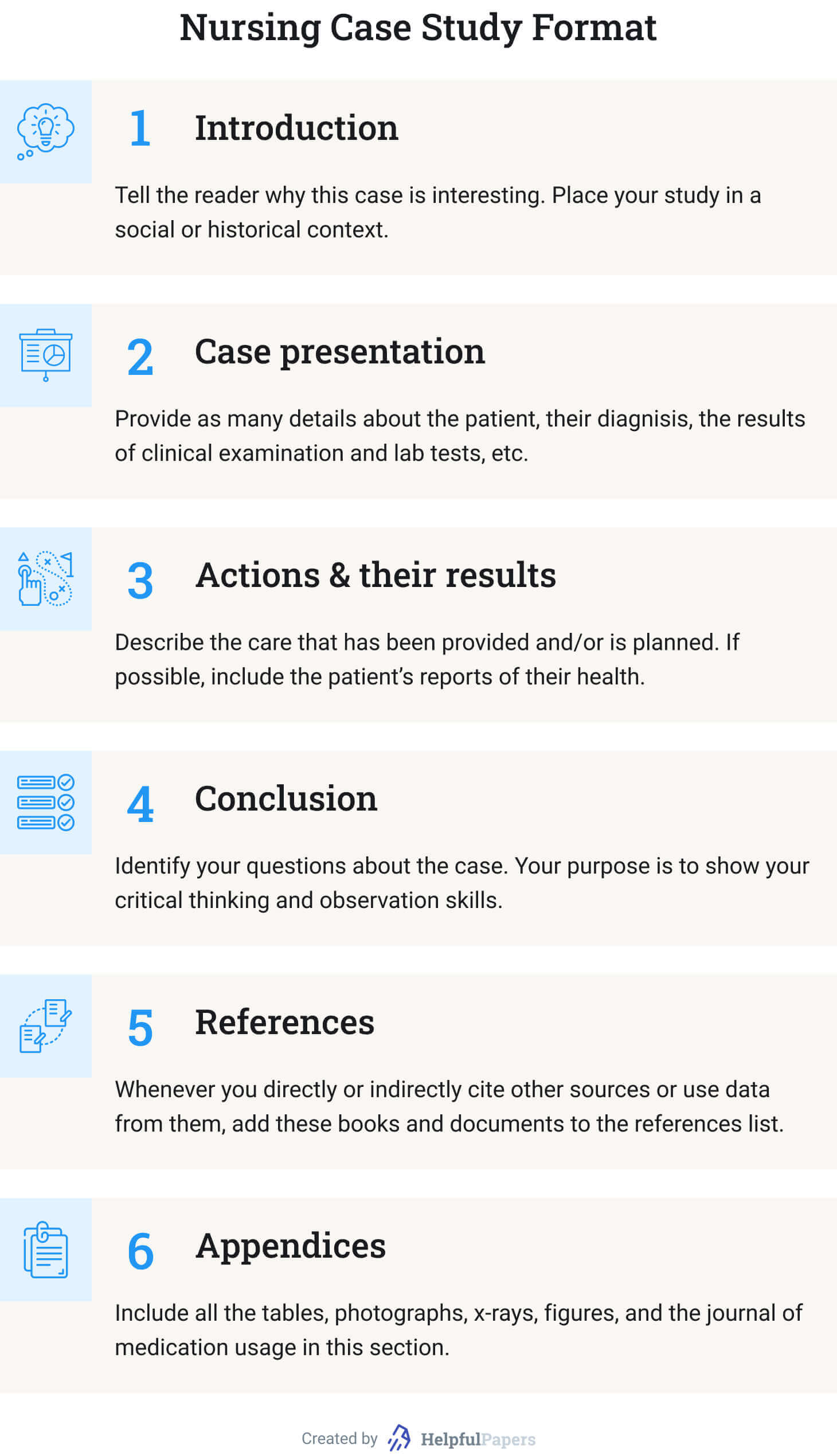
Case Presentation
- Why did the patient seek medical help? (Describe the symptoms.)
- What is known about the patient? (Mention only the information that influenced your diagnosis. Otherwise, explain why some information is irrelevant to the diagnosis.)
- Stick to the narrative form. (Make it a story!)
- What are the variants for diagnosis? (Make a shortlist of possible disorders that fall under the patient’s symptoms. But make it specific: not just “pneumonia” but “bilateral pneumonia,” for example. Besides, this point is optional.)
- What were the results of your clinical examination? (If you saw the patient in person.)
- Explain the results of lab tests. (The words “positive” or “negative” are not always clear.)
Actions and Their Results
This section describes the care that has been provided and/or is planned. You can answer the following questions in narrative form . If some information is missing, skip the point:
- What preliminary actions have been taken? (Be specific: not just “wound care,” but “wound cleaning and dressing.”)
- How long has the patient been under care?
- Has the previous treatment given any visible result?
- Why was it suspended or finished?
- Why did the patient withdraw from treatment (if applicable)?
- How could you improve the patient’s condition if the result was negative?
- If the disease is incurable (like in the case of diabetes), which activities would stabilize the patient’s condition?
- If possible, include the patient’s reports of their own physical and mental health.
In this section, you should identify your questions about the case. It is impossible to answer all of them in one case study. Likewise, it is unreal to suggest all the relevant hypotheses explaining the patient’s condition. Your purpose is to show your critical thinking and observation skills. Finalize your conclusion by summarizing the lessons you learned from the nursing case study.
Whenever you directly or indirectly cite other sources or use data from them, add these books and documents to the references list. Follow the citation style assigned by your professor. Besides, 15 items are already too much. Try to make a list of up to 10. Using textbooks as references can be viewed as bad manners.
Include all the tables, photographs, x-rays, figures, and the journal of medication usage in this section. Unless required otherwise in the assignment, start each item from a new page, naming them “Appendix A,” “Appendix B…”.
Below you will find case study samples for various topics. Using them as a reference will improve your writing. If you need more ideas, you are welcome to use our free title-generating tool .
- Case study: healing and autonomy.
- Sara’s case study: maternal and child nursing.
- COPD medical diagnostics: case study.
- Care standards in healthcare institutions: case study.
- Acute bacterial prostatitis: case study analysis.
- Alzheimer disease: the patient case study.
- The treatment of foot ulcers in diabetic patients: case study.
- Hypertension: C.D’s case study.
- Myocardial infarction: cardiovascular case study.
- Major depressive disorder case.
- Case study of the patient with metabolic syndrome .
- Pulmonary analysis case study .
- Older adults isolation: Case study .
- The holistic care: Case study .
- Obesity in the Elderly: The Case Study.
- Medical ethics: Case study .
- Patient diagnoses and treatment: Case study .
- Obesity case study: Mr. C .
- Nurse Joserine: Case study problems .
- Chronic stable angina: Case study .
- Fetal abnormality: Case study .
- Researching SOAP: Case study .
- Case study for a patient with hormonal disorders .
- “Walking the Tightrope”: A case study analysis .
- ARNP approach: Case study analysis .
- Case study on biomedical ethics in the Christian narrative .
- Thermal injury: Case study .
- Ethical dilemma in nursing: Case study .
- Asthma: A case study of the patient .
- Asthma discharge plan: Mini case study .
- Case study: An ethics of euthanasia .
- Case study: Head-to-toe assessment steps .
- Pain management strategies: Case study .
- Case study: Inflammatory bowel disease .
- Sleep deprivation and insomnia: The case study .
- The case study of a heart failure .
- Porphyria cutanea tarda: Disease case study .
- Case study: Hardy Hospital case summary .
- Obesity and its complications: Case study .
- Angina disease case study .
- Nursing ethics case study .
- Case study of a patient: Assessment and treatment plan .
- Cecile case study: Mrs. J .
- Nursing power in the emergency department: Case study .
- Heart failure case study: Mrs. J .
- Application of ethics in nursing: Case study .
- Sudden visual impairment: Case study .
- Epidemiology case study: Outbreak at Watersedge — Public health discovery game .
- Wellness of senior citizens: Case study .
- Healthcare organization evaluation: Case study of Banner Health .
⏱️ Bonus: Tips on Writing a Case Study in Record Time
Need to prepare a case study on nursing or in another field? Below you’ll find a collection fo tips that will help you do it as quickly as possible!
3 Shortcuts for a Quick Start
If you’re about to start writing a case study, you should check yourself if you’re not doing any of the following:
- spending too much time on selecting a topic;
- reading too much before selecting a topic;
- making conclusions too early – creating bias.
Instead of killing time doing the three useless things discussed above, consider these:
- Choose approach. Note that there are 2 major approaches to case studies: the analytical approach (investigating possible reasons without making any conclusions) and problem-oriented approach (focusing on a particular problem and investigating it).
- Skim some sources (DON’T READ THEM). Select several sources. Simply skim abstracts and conclusions.
- Start making notes early. Simply reading is ineffective unless you’re lucky to have a phenomenal memory. Always make notes of any useful arguments.
4 Shortcuts Not to Get Stuck in the Middle
Even if you kick started your case study, it’s too early to celebrate it. Consider the following traps in the middle of the project:
- Watch the structure. The classic logical structure is your formula of success. It will help you move from one point to another without the unnecessary procrastination:
- Respect the logic. Make your case study flow – make logical transitions between the different parts and make it consistent. Avoid changing your position throughout the paper.
- Be detail-oriented. Any trifle deserves attention when you write a case study.
- Avoid bias. Be sure that all your opinions are based on the specific arguments form the case study. Avoid pouring your biased views into the project.
3 Shortcuts for a Happy Ending
- Offer a realistic solution. College case study is a rehearsal of real-life situations. Take the responsibility for your suggestions.
- Keep your conclusion short. Avoid repeating the details and don’t include any new information.
- Consider creating a Power Point. If your task is not only writing a case study, but also presenting it – why not create PowerPoint slides to help you?
As the last step on your way to a perfect nursing case study, prepare the title page. Its format usually depends on the professor’s requirements. But if you know the citation style, our Title Page Maker is a perfect tool to apply the right formatting and accelerate the process. And if you have any know-how on how to write a medical case study, you are very welcome to share it with other students in the comments below.
❓ Nursing Case Study: FAQ
What is a case study in nursing.
A nursing case study explores the condition of a patient. It is based on previous clinical records, lab reports, and other medical and personal information. A case study focuses on the patient and describes the treatment that was (or should be) applied and its (expected) outcome.
How to Write a Nursing Case Study?
- Collect the bulk of data available about the patient.
- Read literature about the diagnosed condition.
- Focus on the individual patient and their symptoms.
- Describe the situation and outline its development in time.
- Analyze the actions of the medical personnel that have been done.
- Plan further treatment of the patient.
Why Are Case Studies Good for Nursing Students?
Nursing case studies offer you a priceless opportunity to gain experience of different patient conditions and cure methods without visiting the clinic. You can think about whether the proposed treatment was appropriate or wrong and suggest a better solution. And the best thing, your teacher will indicate your mistakes (and no patient will be hurt in the process).
Why Are Case Studies Important in Nursing?
- You learn to distinguish the relevant data and analyze it.
- You learn to ask the right questions.
- You learn to evaluate the severity of symptoms.
- You learn to make better diagnoses.
- You train your critical thinking in terms of treatment methods
- Case studies are in-class simulators of authentic atmosphere in a clinical ward.
- What is a case study? | Evidence-Based Nursing
- Case Studies – Johns Hopkins Medicine
- Case Study Research Design in Nursing
- Case study report for Nursing | Learning Lab – RMIT University
- Case Study or Nursing Care Study? – jstor
Research Paper Analysis: How to Analyze a Research Article + Example
Film analysis: example, format, and outline + topics & prompts.
An official website of the United States government
The .gov means it’s official. Federal government websites often end in .gov or .mil. Before sharing sensitive information, make sure you’re on a federal government site.
The site is secure. The https:// ensures that you are connecting to the official website and that any information you provide is encrypted and transmitted securely.
- Publications
- Account settings
Preview improvements coming to the PMC website in October 2024. Learn More or Try it out now .
- Advanced Search
- Journal List
- v.24(6); 2019 Sep

Lessons learnt: examining the use of case study methodology for nursing research in the context of palliative care
Paula brogan.
School of Communication and Media, University of Ulster, Northern Ireland, UK
Felicity Hasson
Institute of Nursing Research, University of Ulster, Northern Ireland, UK
An empirical social research approach, facilitating in-depth exploration of complex, contemporary contextualised phenomena, case study research has been used internationally in healthcare studies across clinical settings, to explore systems and processes of care delivery. In the United Kingdom, case study methods have been championed by nurse researchers, particularly in the context of community nursing and palliative care provision, where its applicability is well established. Yet, dogged by conceptual confusion, case study remains largely underutilised as a research approach.
Drawing on examples from nursing and palliative care studies, this paper clarifies case study research, identifies key concepts and considers lessons learned about its potential for nursing research within the unique and complex palliative and end of life context.
A case study approach offers nurse researchers the opportunity for in-depth, contextualised understanding of the systems and processes which influence their role in palliative care delivery across settings. However, philosophical and conceptual understandings are needed and further training in case study methodology is required to enable researchers to articulate and conduct case study.
Introduction
An empirical social research approach, facilitating in-depth exploration of a contemporary phenomenon ( Yin, 2009 ), case study research has been used internationally in healthcare studies ( Anthony and Jack, 2009 ) to explore systems of palliative care ( Lalor et al., 2013 ), diverse contexts for palliative care delivery ( Sussman et al., 2011 ), roles of professional groups such as pharmacy ( O’Connor et al., 2011 ), the impact of services such as complementary therapy ( Maddalena et al., 2010 ) and nursing (Kaasalainen et al., 2013). In the United Kingdom, case study methods have been championed by nurse researchers ( Payne et al., 2006 ), particularly in the context of community nursing and palliative care provision ( Kennedy, 2005 ; Walshe et al., 2004 , 2008 ) and its applicability to palliative and end-of-life care research is established ( Goodman et al., 2012 ). Suited to the study of complex processes ( Walshe, 2011 ), case study methodology is embedded in professional guidance on the development of complex interventions ( Medical Research Council, 2008 ). Yet, case study is dogged by conceptual confusion (Flyvberg, 2006), and, despite sporadic use, remains underutilised as a research approach in healthcare settings ( Froggatt et al., 2003 ).
Illustrated by examples from nursing and palliative care studies, this paper aims to clarify conceptual understanding and identify key lessons for its application within these unique and complex contexts and, more broadly, for nursing research.
Origins and definitions
French sociologist Frederic Le Play (1806–1882) is associated with the origin of the case study approach ( Hamel et al., 1993 ). Using a purposive sample of working class families and fieldwork methods of observation and individual interview, he sought a contextualised and in-depth understanding of their individual experiences. Each family case study uncovered the unique experience of that family, but each additional family studied was another ‘ case of the lived experience’ of working class families in mid-18th century France. Thereby, Le Play used the lens of individual experience ( Yin, 2013 ) to build comparisons across families and enrich overall understanding of that complex society.
This early glimpse of the case study approach showed it to be a straightforward ‘field investigation’ ( Hamel et al., 1993 ); epistemologically pragmatic as it generated knowledge through data drawn from diverse sources, such as family members, and used the best available data collection methods then, to inform a holistic and contextualised understanding of how people operated within a complex social system ( Stake, 1995 ).
However, defining case study has become increasingly challenging since its expansion into North America in the 1800s ( Platt, 1992 ), and its use across a range of disciplines such as politics ( Gerring, 2004 ), social science ( George and Bennett, 2005 ), education ( Merriam, 1998 ) and healthcare ( Yin, 2013 ). Variously characterised as a case report, data collection method and methodology ( Anthony and Jack, 2009 ), the development of case histories as illustrations in health and social care and in education ( Merriam, 1998 ) has contributed to further confusion for researchers and readers of case study research ( Gomm et al., 2000 ). Critiques of case study note that it lacks a single definition, such that a plethora of discipline dependant interpretations ( Simons, 2009 ) and loose use of the term case study ( Tight, 2010 ) have contributed to confusion and undermined case study credibility. However, Simons ( 2009 , p. 63) advises researchers that case study must be seen within the complex nexus of political, methodological and epistemological convictions that constitute the field of enquiry, and variations of these may be glimpsed in Table 1 as definitions from four eminent and frequently cited case study authors illustrate philosophical and discipline-influenced differences in emphasis. Consequently, the case study definition selected, with its underpinning ontology and epistemology has important implications for the coherent outworking of the overall research design. It is therefore notable that many of the palliative care case studies contained in Table 2 fail to identify any such definition and this may have implications for interpretation of the quality of studies.
Definitions of case study by four key authors, showing the variation in meaning and interpretation.
| Case study definition | Author (date) |
|---|---|
| ‘Case-study is the study of the particularity and complexity of a single case, coming to understand its activity within important circumstances.’ | Stake ( , p.xi) |
| ‘Case-study is an ‘intensive study of a single unit for the purpose of understanding a larger class of units’ | |
| ‘Case-study is an empirical inquiry that: | Yin ( , p.18) |
| • Investigates a contemporary phenomenon in depth and within its real-life context, especially when | |
| • The boundaries between the phenomenon and context are not clearly evident.’ | |
| ‘An in-depth exploration, from multiple perspectives, of the complexity and uniqueness of a particular project, policy, institution, programme or system in a real-life context. (Case study) is research based, inclusive of different methods and is evidence-led. (its) primary purpose is to generate in-depth understanding of a specific topic, programme, policy, institution, or system to generate knowledge and/or inform policy development, professional practice and civil or community action’ | Simons ( , p. 21) |
Examples of Case Studies (CS) conducted in palliative care contexts.
| Author & location | Focus of study | Sampling | CS Design | CS influence | Analysis | Comments on CS design |
|---|---|---|---|---|---|---|
| Bergen 1992 UK | Evaluation of community nursing care of terminally patients | Convenience Three sites in one health authority Nine cases: Triad of patient, district nurse and continuing care nurse ( = 27) | Interviews ( = 27) | Yin | Content analysis and cross case synthesis | CS served subject and context well. Described challenges of managing large qualitative data meaningful |
| Brogan et al. 2015 UK | Exploring the process of shared decision-making (SDM) between patients, families and healthcare professionals at the end-of-life in a community context | Purposive Nine cases of palliative patients, family and healthcare professional groups, deciding on care and place of care ( = 71) | Phase 1: Observation ( = 13), semi-structured interview ( = 48), document review ( = 31) Phase 2: focus group interview ( = 11) | Stake | Multiple case study analysis outlined by | Describes two phased design, highlighting usefulness of CS design to promote recruitment and access to sensitive end-of-life context |
| Brogan et al. 2017 UK | Exploration of the perceptions and experiences of multi-disciplinary healthcare professionals implementing Shared Decision-Making at the end of life in a home setting. | Purposive Multi-disciplinary healthcare professionals providing palliative care at home = 43). Included: GP ( = 14) Community nurses ( = 12) Specialist palliative care nurses ( = 5) Allied healthcare professionals ( = 6) Social workers ( = 6) | Focus group interviews ( = 11) | Stake | Multiple case study analysis outlined by | Described embedded focus group of large multiple case study. |
| Kaasalainen et al. 2013 Canada | Exploration of the role of the nurse practitioner (NP) in providing palliative care in long-term care homes | : 1. Maximum variation sampling of five cases of long-term care facilities 2. Purposive sample of multidisciplinary healthcare professionals including doctors, nurses, SHPs, residents and family members ( = 143) | Interview ( = 25); Focus groups ( = 35) | Stake | Thematic analysis | No explanation or evaluation of the case study approach |
| Kennedy 2000 UK | Relationship between knowledge and decision making in district nursing assessment | District nurses ( = 11) | Observation of initial assessment; semi-structured interview post visit and 12 months later | Not specified* | Thematic analysis | Author felt that contextualised data limited interpretation of results. No explanation or evaluation of the case study approach. |
| Kennedy 2002 UK | Understand aspects of district nursing assessment, knowledge in use and decision making process | Purposive | = 1 district nurse | Not specified* | Thematic analysis | Focus on one case, in-depth exploration. Acknowledges generalisation is not the intention. No explanation or evaluation of the case study approach. |
| Kennedy et al. 2005 UK | Exploration of the role of the district nurse with cancer patients requiring palliative care | Convenience of three nurses from one healthcare trust | Participant observation of DN visits to patients’ home ( = 11); In-depth interviews with DNs ( = 12) | Not specified* | Thematic analysis using QSR NVivo | Small, convenience sample consistent with in-depth examination, but limiting generalization and open to bias. Little explanation or evaluation of the case study approach. |
| Kramer and Auer 2005 USA | Evaluation of two care of the elderly programs involving multi-disciplinary team approach to in-patient care | Purposive One case of an elder care facility Care home staff: Admin; nurses, social workers, nurse practitioners ( = 38) | : Interview, focus group and questionnaire applied following the deaths of patients ( = 120) | Not specified* Both Stake and Yin referenced. | Thematic | Comment that contextualisation of themes useful. Little explanation or evaluation of the case study approach. |
| Lalor et al. 2013 Ireland | National study to evaluate the impact of specialist and advanced practice roles on clinical outcomes: The SCAPE study. | Purposive Pairs of clinical nurse practitioners from 23 post holding sites ( = 26 participants). | : Interviews, documents, observation & focus groups, as second phase in a 3 phase mixed methods design. | Yin | Framework Analysis and NVivo | CS complemented other phases, provided rigorous process and contextual understanding of data from other sources. |
| Maddalena et al. 2010 Canada | Care givers experience of using complementary therapies to treat symptoms of end of life | Purposive and snowball Three cases, including family carers ( = 7). | : Interview only | Orum, Feagin & Sjoberg (1991) | Thematic and discourse analysis | No comment or evaluation of the CS design |
| Moriarty et al. 2007 UK | Describe and evaluate the implementation of Macmillan nurse facilitator posts (pilot) | Purposive, convenience In two locations, Macmillan nurse facilitators = 2) District nurses = 20 PRNs = 11 | purposive, convenience Semi-structured interviews = 11 Conversational interviews = 15 Observation = 25 Group interviews = 3 Questionnaires = 177 Documentary review Site visits = 25 | Yin | Content analysis. | Multiple methods of data collection advantageous. Limited discussion of CS method reported. |
| Munday et al. 2007 UK | To explore the implementation of GSF in general practice in = 3 locations | Purposive General practices, = 15 cases GPs = 17 Community nurses = 19 Practice managers = 9 | Semi-structured Interviews = 45 Observation of meetings | Not specified* | Thematic; within and cross case analysis using matrix analysis | No patient/carer perspective. No explanation or evaluation of the case study approach. |
| O’Connor et al. 2011 Australia | Exploring the role of community pharmacist in palliative care | Purposive maximum variation, snowball, general advertising Pharmacists = 54, GPs = 10 Community nurses = 44, Family members/carers = 14 = 122 participants | : Focus group = 16 + semi-structured interview = 19 | Not specified*. Both Stake and Yin mentioned. Approach interpretative. | Thematic, using NVivo8 | No explanation or evaluation of the case study approach. |
| Pietroburgo et al. 2008 USA | Examination of collaboration process between two hospice organisations | Convenient Hospice staff Board members (no detail given) | Interview Documentary review Survey | Not specified* | Not described | No explanation or evaluation of the case study approach. |
| Rosenberg and Yates 2007 Australia | Evaluation of the integration of a health promotion approach on a community palliative care organisation | Not reported | (unpublished thesis) Document Interview Focus group Questionnaire | Stake | Thematic and pattern matching | Use of schematic representation of the case found to add conceptual, procedural and methodological clarity. |
| Skilbeck et al. 2002 UK | To evaluate the Macmillan nursing role and service provision | Purposive 12 cases drawn from two sites in England and each case formed around a single Macmillan nurse service Macmillan nurses ( = 44) | (Part of a large mixed methods study) Semi-structured interview ( = 44) Activity diaries ( = 37) | Not specified* | Content analysis | No explanation or evaluation of the case study approach. |
| Sussman et al. 2011 Canada | Health system characteristics and quality of care delivery for cancer patients in four regions in Ontario, | Purposive for exemplars of high and low care services use. Nursing/case mangers ( = 6) Palliative care physicians ( = 11) Directors/manager of community services ( = 15) Academic = ( = 1) | semi-structured interview = 43; self-administered survey = 30; documentary review | Not specified* | Within and cross case comparison and pattern matching | CS was retrospective. Authors noted that large geographical area limited detail on context, and outlying cases may have been overlooked. |
| Walshe et al. 2008 UK | Investigate the influences on referral decisions made within community nursing services | Purposive and snowball sample of generalist and specialist palliative care teams Generalist: GPs ( = 12); Community nurses ( = 14); AHP ( = 1). Specialist Team: Nurses ( = 10); AHP ( = 3); Doctors ( = 2); Key Informants ( = 4). | Interview = 57, observation = 6, and documentary analysis = 13 case notes, and = 84 non-patient specific documents | Yin | onstant comparison, Framework Analysis and pattern matching | Limited description and evaluation of CS approach . |
Case study as a philosophy for the epistemology of knowledge generation
Although frequently linked to naturalistic inquiry ( Lincoln and Guba, 1986 ), interpretative/constructivist philosophy and qualitative methodology ( Stake, 1995 ), case study is not in fact bound to any single research paradigm ( Creswell, 2013 ). It is philosophically pragmatic, such that the case study design should reflect the ontological positions and epistemological considerations of the researchers and their topic of interest ( Luck et al., 2006 ). In practice, this means that case study research may pragmatically employ both qualitative and quantitative methods independently or together in order to respond to the research objectives ( Cooper et al., 2012 ; Simons, 1987 ; Stake, 2006 ). So whilst Table 2 shows that qualitative case studies are common in palliative care, epistemological variation is evident and reflects the study topic, purpose and context of the research. For example, Maddalena et al. (2010) used in-depth interview and discourse analysis to understand individual patient meaning-making; Brogan et al. (2017) used focus groups and thematic analysis as part of an embedded element of a multiple case study, to contrast the diverse perspectives of multi-disciplinary healthcare practitioners on end-of-life decision-making; Sussman et al. (2011) incorporated survey data into a mixed methods multiple case study which explored health system characteristics and quality of care delivery for cancer patients across four regions of Canada. Consequently, it is useful to ‘conceptualise (case study) as an approach to research rather than a methodology in its own right’ ( Rosenberg and Yates, 2007 , p. 448), so that a non-standardised approach exists and the case study design, its boundaries, numbers of cases and methods are guided by the stated underpinning ontological perspectives of the researcher and their topic of interest. The study then flexibly adopts the best methods to gain an in-depth, holistic and contextualised understanding of the phenomenon of interest – the latter objectives being at the core of any definition of case study research.
Key case study concepts and lessons for practice
When considering the utility of a case study approach, research conducted in complex palliative care contexts offers several insights into how central concepts translate to practice.
Contextualised understanding
Drawing on the definitions in Table 1 , Stake emphasised the particularity and intrinsic value of each individual case ( Stake, 1995 ), to emphasise the usefulness of multiple cases to increase insight ( Stake, 2006 ), analyse patterns ( Gerring, 2004 ; George and Bennett, 2005 ) and develop causal hypotheses ( Yin, 2013 ). Yet, whatever the purpose, all case studies are concerned with the crucial relationship between a phenomenon and the environment in which it has occurred. In practice therefore, case study researchers must be concerned with understanding the background systems, structures and processes that influence and interact with the phenomenon under study. This capacity for contextualised and holistic understanding is underpinned by use of multiple data collection methods, such as observation, interview and document review, used simultaneously or sequentially ( Stake, 2006 ; Scholz and Tietje, 2002 ), to mine multiple sources of data, such as participant experience ( Brogan et al., 2017 ; Kaasalainen et al., 2012 ), documents (Lalor et al., 2003) service evaluations ( Walshe et al., 2008 ), and diaries ( Skilbeck and Seymour, 2002 ). This is exemplified in a study by Walshe et al. (2011) , who investigated referral decisions made by community palliative care nurses in the UK, by capturing interview data on the self-reported perspectives of healthcare professionals, in combination with observed team meetings in which decisions were influenced, and review of the written referral policies, protocols and palliative healthcare strategies specific to those decisions. This comprehensive and complex data enabled comparison of decisional processes and their influencing factors both within and across three Primary Care Trusts, thus providing a contemporaneous understanding of the complex relationship between individual nurse's referral decisions and the impact of the organisational and professional systems that underpinned them. Enhancing rigor, such methodological triangulation importantly contributed to the richness of data analysis and the development of assertions which might be drawn from the findings ( Cooper et al., 2012 ; Stake, 2006 ).
Process-focused
Flexible data collection methods, linked to the research purpose, enables case study researchers to gather both historical and real-time data in a variety of ways. For example, Kennedy’s longitudinal case study ( Kennedy, 2002 ) observed snapshots of the initial and follow-up assessment conducted by 11 district nurses over the subsequent 12 months, enabling an exploration of the outcome and impact of their decision-making, demonstrating the usefulness of case study to understand complex roles and processes which are fluid and elusive ( Yin, 2013 ), or otherwise difficult to capture, particularly in the intimate interpersonal contexts where nursing happens.
Analytic frame
Palliative care studies reviewed frequently report the use of thematic analysis. However, whilst this approach is certainly useful to process data generated in qualitative case studies, the approach to analysis must be congruent with the research design and reflect the purpose of the research and methods used. Moreover, beyond decisions about use of thematic analysis or descriptive statistics etc., in case study, important decisions must be made about the analytic frame of the research. Gerring’s definition (2004) set out the analytic frame in which the cases studied might be understood, explaining that each unit of analysis (or case), sheds light on other units (or cases). Thus defined, an individual case offers intrinsically valuable information about a phenomenon ( Stake, 1995 ) and the purposeful selection of cases is central to case study design. This is because, viewed from a certain angle, each case is also a case of something else, such that the findings have broader implications ( Gerring, 2004 ; Simons, 2009 , 1987 ; Yin, 2013 ). In practice, this means that the case and what it is a case of, must be clearly identified and well defined at the outset of a study, since this has implications for the relevance of findings. This can be seen in a study by O’Connor et al., (2011) , who considered the perceived role of community pharmacists in palliative care teams in Australia. Each unique case included multi-disciplinary healthcare team members, such as pharmacists, doctors and nurses working in localities, whose perspectives were sought. Each locality group was a case of community pharmacy provision in palliative care settings in Australia, and findings had implications for the planning of community services overall. So, insight development was possible at an individual, group and organisational level, and inferences were made directly in relation to the parameters of that case study.
The addition of several carefully selected cases, as in multiple case studies, offers the opportunity to analyse data gained within and across cases ( Stake, 2006 ). Case selection may be made in order to explore similarities and contrasting perspectives ( Brogan et al., 2017 ), understand the various impacts of geographical differences ( Sussman et al., 2011 ), and different organisational influences ( Walshe et al., 2008 ). However, whilst repetition of data across cases may reinforce propositions made at the outset of a study, the purpose of increasing the number of cases in case study research is primarily about increasing insight development into the complexity of a phenomenon ( Stake, 2006 ). Since case study is the study of a boundaried phenomenon ( Yin, 2013 ), establishing the analytic frame then underpins the selection criteria for potentially useful cases. Such clarification is essential since it provides the lens through which to focus research ( Gerring, 2004 ; Scholz and Tietje, 2002 ; Stake, 2006 ) and permits key decisions to be made about data which may be included and that which is not applicable.
However, significantly, this information is rarely articulated within published case studies in palliative care. This is an important issue for the quality of case study research, since description of the process of refining case study parameters, establishing clear boundaries of the case, articulating propositions based on existing literature, identifying the sources of data (people, records, policies, etc.) and the ways in which data would be captured, establishes clarity and underpins a rigorous, systematic and comprehensive process ( Gibbert et al., 2008 ), which can usefully contribute to practice and policy development ( George and Bennett, 2005 ).
Shaped by organisational systems, intimate settings and significant life stage contexts, the interconnection between context and participant experience of palliative care is one example of a process of healthcare provision that is often complex, subtle and elusive ( Walshe et al., 2011 ). Case studies conducted in these swiftly changing contexts illustrate several characteristics of case study research, which make it an appropriate methodological option for nurse researchers, providing the opportunity for in-depth, contextualised understanding of the systems and processes which influence their role in palliative care delivery across settings ( Walshe et al., 2004 ) and many others who seek a contextualised, contemporaneous understanding of any complex role or process ( Yin, 2013 ; Simons, 2009 ). This fieldwork-based approach has the potential to achieve depth and breadth of insight through the pragmatic, but carefully planned and articulated, use of multiple methods of data collection in order to answer the research question ( Stake, 2006 ) when analysed systematically within a frame determined at the outset by the definition of the case and its boundaries ( Gerring, 2004 ). Yet, the methodological flexibility that is advantageous in complex contexts, may be misunderstood ( Hammersley, 2012 ), particularly where terminology is unclear ( Lather, 1996 ) or where description of the systematic and rigorous application of the approach is missing from the report ( Morrow, 2005 ). Taken as an example of one area of healthcare research, evidence suggests that palliative care studies that deal meaningfully with underpinning philosophical perspectives for their selected case study approach, or which articulate coherent links between the defined case, its boundaries and the analytical frame are rare. The impact of such omissions may be the perpetuation of confusion and out-dated perceptions about the personality and quality of case study research ( King et al., 1994 ), with implications for its wider adoption by nurses in healthcare research. Further training in case study methodology is required to promote philosophical and conceptual understanding, and to enable researchers to fully articulate, conduct and report case study, to underpin its credibility, relevance and future use ( Hammersley et al., 2000 ; Stake and Turnbull, 1982).

Key points for policy, practice and/or research
- Case study is well suited to nursing research in palliative care contexts, where in-depth understanding of participant experience, complex systems and processes of care within changing contexts is needed.
- Not bound to any single paradigm, nor defined by any methodology, case study’s pragmatism and flexibility makes it useful for studies in palliative care.
- Training is needed in the underpinning philosophical and conceptual basis of case study methodology, in order to articulate, conduct and report credible case study research, and take advantage of the opportunities it offers for the conduct of palliative and end-of-life care research.
Paula Brogan is a Lecturer in counselling and communication in the School of Communication and Media, and was recently appointed as Faculty Partnership Manager, University of Ulster. Dual qualified as a Registered Nurse with specialism in District Nursing and as a Counsellor/couple psychotherapist (Reg MBACPaccred), she has over 30 years’ clinical practice experience in community palliative care nursing and the provision of psychological care to patients and families dealing with palliative and chronic illness. Having worked across statutory, voluntary and private sectors, her PhD focused on multi-disciplinary decision-making at the end of life with patients and families in the community setting. Currently secretary of the Palliative Care Research Forum for Northern Ireland (PCRFNI), Paula’s ongoing research interests include communication and co-constructed decision-making in palliative and chronic illness, and the psychological support of individuals, couples, patient-family groups and multi-disciplinary staff responding to challenges of advanced progressive illness.
Felicity Hasson is a Senior Lecturer in the Institute of Nursing Research at the University of Ulster with 20 years’ experience in research. A social researcher by background, she has extensive experience and knowledge of qualitative, quantitative and mixed method research and has been involved in numerous research studies in palliative and end-of-life care. She completed her MSc in 1996 and her PhD from University of Ulster in 2012. Felicity sits on the Council of Partners for the All Ireland Institute of Hospice and the Palliative Care Palliative Care Research Network (PCRN) and is an executive board member for the UK Palliative Care Research Society. She holds an editorial board position on Futures and Foresight Science. Felicity has an established publication track recorded and successful history of grant applications. Her research interests include nurse and assistant workforce, workforce training, palliative care and chronic illness (malignant and non-malignant with patients, families and multi-disciplinary health care professionals) and public awareness of palliative care and end of life issues.
Sonja McIlfatrick is a Professor in Nursing and Palliative Care and has recently been appointed as the Head of School of Nursing at University of Ulster. She is an experienced clinical academic with experience in nursing and palliative care practice, education and research. She previously worked as the Head of Research for the All Ireland Institute of Hospice and Palliative Care (2011-2014) and led the establishment of the All Ireland Palliative Care Research Network (PCRN) and is the current Chair of the Strategic Scientific Committee for the PCRN (AIIHPC). Sonja is an Executive Board member for the UK, Palliative Care Research Society and is member of the Research Scientific Advisory Committee for Marie Curie, UK. Sonja holds an Editorial Board position on the International Journal of Palliative Nursing and Journal of Research in Nursing. Professor McIlfatrick has published widely in academic and professional journals focused on palliative care research and has a successful history of grant acquisition. Sonja has a keen interest in doctoral education and is the current President of the International Network of Doctoral Education in Nursing (INDEN). Her research interests include, palliative care in chronic illness, decision making at end of life; public awareness of palliative care and psychosocial support for family caregivers affected by advanced disease.
Declaration of conflicting interests
The author(s) declared no potential conflicts of interest with respect to the research, authorship, and/or publication of this article.
Ethics statement
Ethical permission was not required for this paper.
The author(s) received no financial support for the research, authorship, and/or publication of this article.
- Anthony S, Jack S. (2009) Qualitative case-study methodology in nursing research: An integrative review . Journal of Advanced Nursing 65 ( 6 ): 1171–1181. [ PubMed ] [ Google Scholar ]
- Brogan P, Hasson F, McIlfatrick S. (2017) Shared decision-making at the end of life: A focus group study exploring the perceptions and experiences of multi-disciplinary healthcare professionals working in a home setting . Palliative Medicine 32 ( 1 ): 123–132. [ PubMed ] [ Google Scholar ]
- Cooper B, Glaesser J, Gomm R, et al. (2012) Challenging the Qualitative-Quantitative Divide: Explorations in Case-focused Causal Analysis , London: Continuum. [ Google Scholar ]
- Creswell JW. (2013) Qualitative Inquiry and Research Design: Choosing among five approaches , 3rd ed. Thousand Oaks: SAGE. [ Google Scholar ]
- Flyvbjerg B. (2006) Five misunderstandings about case-study research . Qualitative Inquiry 12 ( 2 ): 219–245. [ Google Scholar ]
- Froggatt KA, Field D, Bailey C, et al. (2003) Qualitative research in palliative care 1990–1999: A descriptive review . International Journal of Palliative Nursing 9 ( 3 ): 98–104. [ PubMed ] [ Google Scholar ]
- George AL, Bennett A. (2005) Case Studies and Theory Development in the Social Sciences , Cambridge, MA: MIT Press. [ Google Scholar ]
- Gerring J. (2004) What is case-study and what is it good for? The American Political Science Review 98 ( 2 ): 341–354. [ Google Scholar ]
- Gibbert M, Ruigrok W, Wicki B. (2008) What passes as rigorous case-study? Strategic Management Journal 29 : 1465–1474. [ Google Scholar ]
- Gomm R, Hammersley M, Foster P. (2000) Case Study Method: Key Issues, Key Texts , London: SAGE. [ Google Scholar ]
- Goodman C, Froggatt KA, Mathie E. (2012) End-of-life Care. Methods Review 12 , London: National Institute for Health Research and School for Social Care Research. [ Google Scholar ]
- Hamel J, Defour S, Fortin D. (1993) Case-study Methods. Qualitative Research Methods Series. 32 , Newbury Park: SAGE. [ Google Scholar ]
- Hammersley M, Foster P, Gomm R. (2000) Case study and generalisation . In: Gomm R, Hammersley M, Foster P. (eds) Case Study Method: Key Issues, Key Texts , London: SAGE, pp. 98–115. [ Google Scholar ]
- Hammersley M. (2012) Troubling theory in case study research . Higher Education Research and Development 31 ( 3 ): 393–405. [ Google Scholar ]
- Kaasalainen S, Ploeg J, McAiney C, et al. (2012) Role of the nurse practitioners in providing palliative care in long-term care homes . International Journal of Palliative Nursing 19 ( 10 ): 477–485. [ PubMed ] [ Google Scholar ]
- Kennedy C. (2005) District nursing support for patients with cancer requiring palliative care . British Journal of Community Nursing 10 ( 12 ): 566–574. [ PubMed ] [ Google Scholar ]
- Kennedy C. (2002) The decision-making process in a district nursing assessment . British Journal of Community Nursing 7 ( 10 ): 505–513. [ PubMed ] [ Google Scholar ]
- King G, Keohane RO, Verba S. (1994) Designing Social Inquiry: Scientific Inference in Qualitative Research , Princeton: Princeton University Press. [ Google Scholar ]
- Lalor JG, Casey D, Elliott N, et al. (2013) Using case-study within a sequential explanatory design to evaluate the impact of specialist and advanced practice roles on clinical outcomes: The SCAPE study . BMC Medical Research Methodology 13 ( 1 ): 55. [ PMC free article ] [ PubMed ] [ Google Scholar ]
- Lather P. (1996) Troubling clarity: The politics of accessible language . Harvard Educational Review 66 ( 3 ): 525–554. [ Google Scholar ]
- Lincoln YS, Guba EG. (1986) But is it rigorous? Trustworthiness and authenticity in naturalistic evaluation . In: Williams DD. (eds) Naturalistic Evaluation , San Francisco: Josey-Bass, pp. 73–84. [ Google Scholar ]
- Luck L, Jackson D, Usher K. (2006) Case-study: A bridge across paradigms . Nursing Inquiry 13 ( 2 ): 103–109. [ PubMed ] [ Google Scholar ]
- Maddalena VJ, Bernard WT, Etowa J, et al. (2010) Cancer care experiences and the use of complementary and alternative medicine at the end-of-life in Nova Scotia’s black communities . J Transcultural Nursing 21 ( 2 ): 114–122. [ PMC free article ] [ PubMed ] [ Google Scholar ]
- Medical Research Council (2008) Complex Interventions Guidance, www.mrc.ac.uk/complexinterventionsguidance (accessed 14 March 2014).
- Merriam SB. (1998) Qualitative research and case-study applications in education , San Francisco: Jossey-Bass. [ Google Scholar ]
- Morrow SL. (2005) Quality and trustworthiness in qualitative research in counselling psychology . Journal of Counseling Psychology 52 ( 2 ): 256–260. [ Google Scholar ]
- O’Connor M, Fisher C, French L, et al. (2011) Exploring the community pharmacist’s role in palliative care: Focusing on the person not just the prescription . Patient Education and Counseling 83 : 458–464. [ PubMed ] [ Google Scholar ]
- Payne S, Field D, Rolls L, et al. (2006) Case-study research methods in end-of-life care: Reflections on three studies . Journal of Advanced Nursing 58 ( 3 ): 236–245. [ PubMed ] [ Google Scholar ]
- Platt J. (1992) Case study in American methodological thought . Current Sociology 40 ( 1 ): 17–48. [ Google Scholar ]
- Rosenberg JP, Yates PM. (2007) Schematic representation of case-study research designs . Journal of Advanced Nursing 60 ( 4 ): 447–452. [ PubMed ] [ Google Scholar ]
- Scholz RW, Tietje O. (2002) Embedded Case Study Methods: Integrating Quantitative and Qualitative Knowledge , Los Angeles: SAGE. [ Google Scholar ]
- Simons H. (1987) The paradox of case-study . Cambridge Journal of Education 26 ( 2 ): 225–240. [ Google Scholar ]
- Simons H. (2009) Case-study Research in Practice , Thousand Oaks: SAGE. [ Google Scholar ]
- Skilbeck J, Seymour J. (2002) Meeting complex needs: And analysis of Macmillan nurses’ work with patients . International Journal of Palliative Nursing 8 ( 12 ): 574–582. [ PubMed ] [ Google Scholar ]
- Stake RE. (1995) The Art of Case-study Research , Thousand Oaks: SAGE. [ Google Scholar ]
- Stake RE, Trumbull DJ. (1987) Naturalistic generalizations . Review Journal of Philosophy and Social Science 7 : 1–12. [ Google Scholar ]
- Stake RE. (2006) Multiple case-study analysis , New York: The Guilford Press. [ Google Scholar ]
- Sussman J, Barbera L, Bainbridge D, et al. (2011) Health system characteristics and quality of care delivery: A comparative case-study examination of palliative care for cancer patients in four regions in Ontario, Canada . Palliative Medecine 26 ( 4 ): 322–335. [ PubMed ] [ Google Scholar ]
- Tight M. (2010) The curious case of case study: A viewpoint . International Journal of Social Research Methodology 13 ( 4 ): 329–339. [ Google Scholar ]
- Walshe C. (2011) The evaluation of complex interventions in palliative care: An exploration of the potential of case-study . Palliative Medicine 25 ( 8 ): 774–781. [ PubMed ] [ Google Scholar ]
- Walshe C, Chew-Graham C, Todd C, et al. (2008) What influences referrals within community palliative care services? A qualitative case-study . Social Science and Medicine 6 : 137–146. [ PubMed ] [ Google Scholar ]
- Walshe CE, Caress AL, Chew-Graham C, et al. (2004) Case studies: A research strategy appropriate for palliative care?’ . Palliative Medicine 18 : 677–684. [ PubMed ] [ Google Scholar ]
- Yin RK. (2013) Case-study Research: Design and Methods (Applied Social Research Methods) , Newbury Park: SAGE. [ Google Scholar ]
- Yin RK. (2009) Case-study Research: Design and Methods , 4th ed. Newbury Park: SAGE. [ Google Scholar ]
Nursing Case Studies with Answers
Explore Nursing Case Studies with Answers and examples in Carepatron's free downloadable PDF. Enhance your nursing knowledge and prepare for exams with practical scenarios.

By Wynona Jugueta on Jun 20, 2024.
Fact Checked by Ericka Pingol.
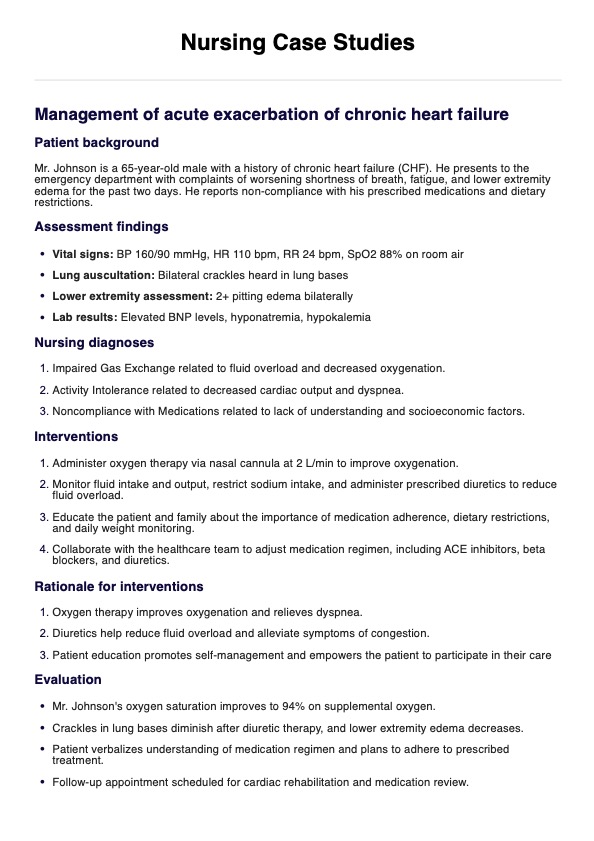
What is a case study?
A case study in medicine is a detailed report of a patient's experience with a disease, treatment, or condition. It typically includes the patient's medical history, symptoms, diagnostic tests, treatment course, and outcome.
Some key things to know about medical case studies template. First, they delve deep into the specifics of a single case, providing a rich understanding of a particular medical situation.
Medical professionals use case studies to learn about rare diseases, unusual presentations of common conditions, and the decision-making process involved in complex cases.
Case studies can identify exciting areas for further investigation through more rigorous clinical trials. While informative, they can't be used to develop general treatment guidelines because they only focus on a single case.
Overall, medical case studies are valuable tools for medical education and research, offering insights into human health and disease complexities.
Printable Nursing Case Studies with Answers
Download this Nursing Case Studies with Answers to analyze complex clinical situations, identify priority needs, and develop effective care plans tailored to individual patients.
What is in a nursing case study?
A nursing case study is a detailed examination of a patient's health condition, treatment plan, and overall care journey, specifically from the perspective of nursing practice. These case studies are essential components of nursing education and professional development, providing valuable insights into clinical scenarios and patient care experiences.
In a case nursing study template, various elements are typically included to comprehensively understand the patient's situation. First and foremost, the case study outlines the patient's demographic information, including age, gender, medical history, and presenting symptoms. This demographic overview sets the stage for understanding the context in which healthcare interventions occur.
Moreover, nursing case studies often delve into the nursing assessment process, highlighting the initial and ongoing assessments nurses conduct to gather relevant patient health status data. These assessments involve physical examinations, vital sign monitoring, and assessment tools to identify potential health issues and risk factors.
Critical thinking skills are essential in nursing case studies, as they enable nurses to analyze complex clinical situations, identify priority needs, and develop effective care plans tailored to individual patients. Nursing students and experienced nurses use case studies as opportunities to enhance their critical thinking abilities and clinical decision-making processes.
Nursing case studies serve several vital purposes within healthcare education and professional practice, whether they are a primary care physician or a group of nursing students. Let's explore each purpose in detail:
Enhancing clinical reasoning skills
One primary purpose of nursing case studies is to enhance nursing students' and practicing nurses' clinical reasoning skills. By presenting realistic patient scenarios, case studies challenge individuals to analyze clinical data, interpret findings, and develop appropriate nursing interventions. This process promotes critical thinking and problem-solving abilities essential for effective nursing practice.
Applying theoretical knowledge to practice
Nursing case studies provide a bridge between theoretical knowledge and practical application. They allow nursing students to apply concepts learned in the classroom to real-world patient care situations. By engaging with case studies, students can integrate theoretical principles with clinical practice, gaining a deeper understanding of nursing concepts and their relevance to patient care.
Facilitating interdisciplinary collaboration
Another purpose of nursing case studies is to facilitate interdisciplinary collaboration among healthcare professionals. Nurses often collaborate with physicians, specialists, therapists, and other team members in complex patient cases to deliver comprehensive care. Case studies offer opportunities for nurses to explore collaborative decision-making processes, communication strategies, and teamwork dynamics essential for providing quality patient care.
Promoting evidence-based practice
Nursing case studies are crucial in promoting evidence-based practice (EBP) within nursing and healthcare settings. Nurses can make informed decisions about patient care interventions by analyzing patient scenarios and considering current research evidence. Case studies encourage nurses to critically evaluate research findings, clinical guidelines, and best practices to ensure the delivery of safe, effective, and patient-centered care.
Fostering professional development
Engaging with nursing case studies contributes to the ongoing professional development of nurses at all stages of their careers. For nursing students, case studies provide valuable learning experiences that help prepare them for clinical practice. For experienced nurses, case studies offer opportunities to refine clinical skills, stay updated on emerging healthcare trends, and reflect on past experiences to improve future practice.
How to write a nursing case study?
Writing a nursing case study involves several essential steps to ensure accuracy, relevance, and clarity. Let's break down the process into actionable steps:
Step 1: Select a patient case
Begin by selecting a patient case that presents a relevant and compelling healthcare scenario. Consider factors such as the patient's demographic information, medical history, presenting symptoms (e.g., joint stiffness, pain), and healthcare needs (e.g., medication administration, vital signs monitoring). Choose a case that aligns with your learning objectives and offers meaningful analysis and discussion opportunities.
Step 2: Gather relevant data
Collect comprehensive data about the selected patient case, including medical records, test results, nursing assessments, and relevant healthcare documentation. Pay close attention to details such as the patient's current health status, past medical history (e.g., diabetes), treatment plans, and any ongoing concerns or challenges. Utilize assessment tools and techniques to evaluate the patient's condition thoroughly and identify areas of clinical significance.
Step 3: Assess the patient's needs
Based on the gathered data, evaluate the patient's needs, considering physical, emotional, social, and environmental factors. Assess the patient's pain levels, mobility, vital signs, and other relevant health indicators. Identify any potential complications, risks, or areas requiring immediate attention. Consider the patient's preferences, cultural background, and individualized care requirements in your assessment.
Step 4: Formulate nursing diagnoses
Formulate nursing diagnoses that accurately reflect the patient's health needs and priorities based on your assessment findings. Identify actual and potential nursing diagnoses related to the patient's condition, considering factors such as impaired mobility, ineffective pain management, medication adherence issues, and self-care deficits. Ensure your nursing diagnoses are specific, measurable, achievable, relevant, and time-bound (SMART).
Step 5: Develop a care plan
Develop a comprehensive care plan outlining the nursing interventions and strategies to address the patient's identified needs and nursing diagnoses. Prioritize interventions based on the patient's condition, preferences, and care goals. Include evidence-based nursing interventions to promote optimal health outcomes, manage symptoms, prevent complications, and enhance the patient's overall well-being. Collaborate with other healthcare professionals as needed to ensure coordinated care delivery.
Step 6: Implement and evaluate interventions
Implement the nursing interventions outlined in the care plan while closely monitoring the patient's response to treatment. Administer medications, provide patient education, perform nursing procedures, and coordinate care activities to effectively meet the patient's needs. Continuously evaluate the effectiveness of interventions, reassessing the patient's condition and adjusting the care plan as necessary. Document all interventions, observations, and outcomes accurately and comprehensively.
Step 7: Reflect and seek assistance
Reflect on the nursing case study process, considering what worked well, areas for improvement, and lessons learned. Seek assistance from nursing instructors, preceptors, or colleagues if you encounter challenges or have concerns about the patient's care. Collaborate with interdisciplinary team members to address complex patient issues and ensure holistic care delivery. Continuously strive to enhance your nursing practice through ongoing learning and professional development.
Nursing Case Studies with Answers example (sample)
Below is an example of a nursing case study sample created by the Carepatron team. This sample illustrates a structured framework for documenting patient cases, outlining nursing interventions, and providing corresponding answers to guide learners through the analysis process. Feel free to download the PDF and use it as a reference when formulating your own nursing case studies.
Download this free Nursing Case Studies with Answers PDF example here

Examples of a nursing case study
Let's explore a few other examples of nursing case studies to illustrate how they are developed and analyzed:
Case study 1: management of chronic pain in elderly patients
- Scenario : Mrs. Smith, a 75-year-old woman, is admitted to the hospital with complaints of chronic pain in her lower back and joints. She has a history of osteoarthritis and hypertension. Mrs. Smith reports difficulty performing activities of daily living due to her pain, which has been progressively worsening over the past year.
- Assessment : Nursing assessment reveals a limited range of motion, joint stiffness, and increased blood pressure readings. Mrs. Smith's pain is rated 7 out of 10 on the scale. Vital signs are within normal limits except for elevated blood pressure.
- Diagnosis : Nursing diagnosis includes "Chronic Pain related to osteoarthritis and impaired mobility" and "Activity Intolerance related to pain and limited joint mobility."
- Interventions : Nursing interventions focus on pain management strategies such as administering analgesic medications, providing heat therapy, and assisting with gentle exercise. Patient education is provided on proper body mechanics and joint protection techniques.
- Evaluation : Mrs. Smith's pain is reassessed regularly, and interventions are adjusted based on her response. Progress notes indicate a reduction in pain intensity, improved mobility, and increased participation in activities of daily living. Blood pressure readings are monitored closely to ensure optimal management of hypertension.
Case Study 2: family-centered care for a child with chronic illness
- Scenario : Johnny, a 6-year-old boy with cystic fibrosis, is admitted to the pediatric unit for respiratory exacerbation. His parents express concerns about managing his condition at home and coping with the emotional impact of his illness on the family.
- Assessment : Nursing assessment reveals decreased lung function, persistent cough, and increased respiratory rate. Johnny's parents report feeling overwhelmed and anxious about his health.
- Diagnosis : Nursing diagnosis includes "Ineffective Airway Clearance related to thick, tenacious secretions" and "Anxiety related to managing a child with chronic illness."
- Interventions : Nursing interventions focus on airway clearance techniques, respiratory treatments, and emotional support for Johnny and his family. Nursing staff facilitate support groups for families of children with chronic illnesses to provide mutual support and share coping strategies.
- Evaluation : Johnny's respiratory status is monitored closely, and interventions are implemented to improve airway clearance. Respiratory treatments are administered as prescribed, and progress is documented in the medical record. Johnny's parents report feeling more confident in managing his care at home and express appreciation for the support received from the healthcare team.
Why use Carepatron as your nursing software?
Carepatron stands out as a comprehensive and reliable solution for nursing professionals seeking efficient and streamlined workflows in their practice. With a range of features tailored to the needs of nurses and healthcare teams, Carepatron offers unparalleled support and functionality for managing various aspects of patient care.
Nurse scheduling software
One of the key advantages of Carepatron is its nurse scheduling software, which simplifies the process of creating and managing schedules for nursing staff. With intuitive scheduling tools and customizable options, nurses can easily coordinate shifts, manage availability, and ensure adequate staffing levels to meet patient needs effectively.
Telehealth platform
In addition, Carepatron offers a robust telehealth platform that facilitates remote patient monitoring, virtual consultations, and telemedicine services. This feature enables nurses to provide continuity of care beyond traditional healthcare settings, reaching patients in remote areas or those unable to attend in-person appointments.
Clinical documentation software
Furthermore, Carepatron's clinical documentation software streamlines the documentation process, allowing nurses to easily capture patient data, record assessments, and document interventions. The platform supports accurate and efficient documentation practices, ensuring compliance with regulatory standards and promoting continuity of care across healthcare settings.

Commonly asked questions
In clinical terms, a case study is a detailed examination of a patient's medical history, symptoms, diagnosis, treatment, and outcomes, typically used for educational or research purposes.
Case studies are essential in nursing as they provide real-life scenarios for nurses to apply theoretical knowledge, enhance critical thinking skills, and develop practical clinical reasoning and decision-making abilities.
Case studies in nursing education offer benefits such as promoting active learning, encouraging problem-solving skills, facilitating interdisciplinary collaboration, and fostering a deeper understanding of complex healthcare situations.
Related Templates
Popular templates.
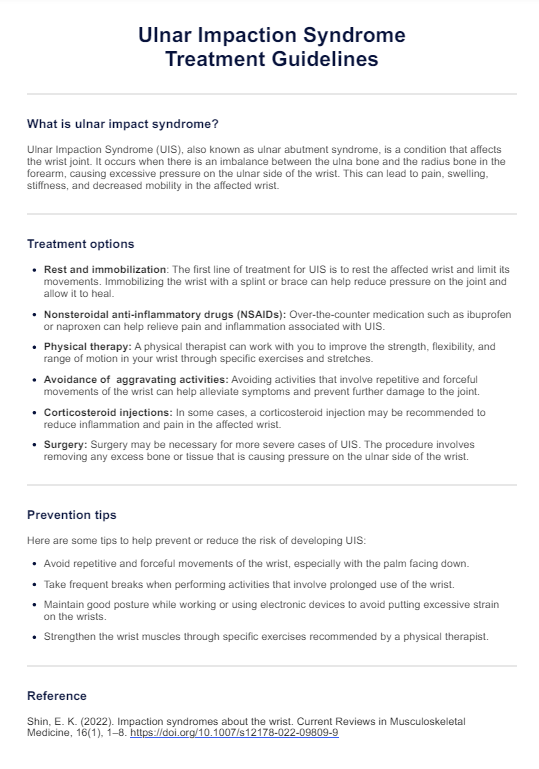
Join 10,000+ teams using Carepatron to be more productive

Health Case Studies
(29 reviews)
Glynda Rees, British Columbia Institute of Technology
Rob Kruger, British Columbia Institute of Technology
Janet Morrison, British Columbia Institute of Technology
Copyright Year: 2017
Publisher: BCcampus
Language: English
Formats Available
Conditions of use.
Learn more about reviews.
Reviewed by Jessica Sellars, Medical assistant office instructor, Blue Mountain Community College on 10/11/23
This is a book of compiled and very well organized patient case studies. The author has broken it up by disease patient was experiencing and even the healthcare roles that took place in this patients care. There is a well thought out direction and... read more
Comprehensiveness rating: 5 see less
This is a book of compiled and very well organized patient case studies. The author has broken it up by disease patient was experiencing and even the healthcare roles that took place in this patients care. There is a well thought out direction and plan. There is an appendix to refer to as well if you are needing to find something specific quickly. I have been looking for something like this to help my students have a base to do their project on. This is the most comprehensive version I have found on the subject.
Content Accuracy rating: 5
This is a book compiled of medical case studies. It is very accurate and can be used to learn from great care and mistakes.
Relevance/Longevity rating: 5
This material is very relevant in this context. It also has plenty of individual case studies to utilize in many ways in all sorts of medical courses. This is a very useful textbook and it will continue to be useful for a very long time as you can still learn from each study even if medicine changes through out the years.
Clarity rating: 5
The author put a lot of thought into the ease of accessibility and reading level of the target audience. There is even a "how to use this resource" section which could be extremely useful to students.
Consistency rating: 5
The text follows a very consistent format throughout the book.
Modularity rating: 5
Each case study is individual broken up and in a group of similar case studies. This makes it extremely easy to utilize.
Organization/Structure/Flow rating: 5
The book is very organized and the appendix is through. It flows seamlessly through each case study.
Interface rating: 5
I had no issues navigating this book, It was clearly labeled and very easy to move around in.
Grammatical Errors rating: 5
I did not catch any grammar errors as I was going through the book
Cultural Relevance rating: 5
This is a challenging question for any medical textbook. It is very culturally relevant to those in medical or medical office degrees.
I have been looking for something like this for years. I am so happy to have finally found it.
Reviewed by Cindy Sun, Assistant Professor, Marshall University on 1/7/23
Interestingly, this is not a case of ‘you get what you pay for’. Instead, not only are the case studies organized in a fashion for ease of use through a detailed table of contents, the authors have included more support for both faculty and... read more
Interestingly, this is not a case of ‘you get what you pay for’. Instead, not only are the case studies organized in a fashion for ease of use through a detailed table of contents, the authors have included more support for both faculty and students. For faculty, the introduction section titled ‘How to use this resource’ and individual notes to educators before each case study contain application tips. An appendix overview lists key elements as issues / concepts, scenario context, and healthcare roles for each case study. For students, learning objectives are presented at the beginning of each case study to provide a framework of expectations.
The content is presented accurately and realistic.
The case studies read similar to ‘A Day In the Life of…’ with detailed intraprofessional communications similar to what would be overheard in patient care areas. The authors present not only the view of the patient care nurse, but also weave interprofessional vantage points through each case study by including patient interaction with individual professionals such as radiology, physician, etc.
In addition to objective assessment findings, the authors integrate standard orders for each diagnosis including medications, treatments, and tests allowing the student to incorporate pathophysiology components to their assessments.
Each case study is arranged in the same framework for consistency and ease of use.
This compilation of eight healthcare case studies focusing on new onset and exacerbation of prevalent diagnoses, such as heart failure, deep vein thrombosis, cancer, and chronic obstructive pulmonary disease advancing to pneumonia.
Each case study has a photo of the ‘patient’. Simple as this may seem, it gives an immediate mental image for the student to focus.
Interface rating: 4
As noted by previous reviewers, most of the links do not connect active web pages. This may be due to the multiple options for accessing this resource (pdf download, pdf electronic, web view, etc.).
Grammatical Errors rating: 4
A minor weakness that faculty will probably need to address prior to use is regarding specific term usages differences between Commonwealth countries and United States, such as lung sound descriptors as ‘quiet’ in place of ‘diminished’ and ‘puffers’ in place of ‘inhalers’.
The authors have provided a multicultural, multigenerational approach in selection of patient characteristics representing a snapshot of today’s patient population. Additionally, one case study focusing on heart failure is about a middle-aged adult, contrasting to the average aged patient the students would normally see during clinical rotations. This option provides opportunities for students to expand their knowledge on risk factors extending beyond age.
This resource is applicable to nursing students learning to care for patients with the specific disease processes presented in each case study or for the leadership students focusing on intraprofessional communication. Educators can assign as a supplement to clinical experiences or as an in-class application of knowledge.
Reviewed by Stephanie Sideras, Assistant Professor, University of Portland on 8/15/22
The eight case studies included in this text addressed high frequency health alterations that all nurses need to be able to manage competently. While diabetes was not highlighted directly, it was included as a potential comorbidity. The five... read more
The eight case studies included in this text addressed high frequency health alterations that all nurses need to be able to manage competently. While diabetes was not highlighted directly, it was included as a potential comorbidity. The five overarching learning objectives pulled from the Institute of Medicine core competencies will clearly resonate with any faculty familiar with Quality and Safety Education for Nurses curriculum.
The presentation of symptoms, treatments and management of the health alterations was accurate. Dialogue between the the interprofessional team was realistic. At times the formatting of lab results was confusing as they reflected reference ranges specific to the Canadian healthcare system but these occurrences were minimal and could be easily adapted.
The focus for learning from these case studies was communication - patient centered communication and interprofessional team communication. Specific details, such as drug dosing, was minimized, which increases longevity and allows for easy individualization of the case data.
While some vocabulary was specific to the Canadian healthcare system, overall the narrative was extremely engaging and easy to follow. Subjective case data from patient or provider were formatted in italics and identified as 'thoughts'. Objective and behavioral case data were smoothly integrated into the narrative.
The consistency of formatting across the eight cases was remarkable. Specific learning objectives are identified for each case and these remain consistent across the range of cases, varying only in the focus for the goals for each different health alterations. Each case begins with presentation of essential patient background and the progress across the trajectory of illness as the patient moves from location to location encountering different healthcare professionals. Many of the characters (the triage nurse in the Emergency Department, the phlebotomist) are consistent across the case situations. These consistencies facilitate both application of a variety of teaching methods and student engagement with the situated learning approach.
Case data is presented by location and begins with the patient's first encounter with the healthcare system. This allows for an examination of how specific trajectories of illness are manifested and how care management needs to be prioritized at different stages. This approach supports discussions of care transitions and the complexity of the associated interprofessional communication.
The text is well organized. The case that has two levels of complexity is clearly identified
The internal links between the table of contents and case specific locations work consistently. In the EPUB and the Digital PDF the external hyperlinks are inconsistently valid.
The grammatical errors were minimal and did not detract from readability
Cultural diversity is present across the cases in factors including race, ethnicity, socioeconomic status, family dynamics and sexual orientation.
The level of detail included in these cases supports a teaching approach to address all three spectrums of learning - knowledge, skills and attitudes - necessary for the development of competent practice. I also appreciate the inclusion of specific assessment instruments that would facilitate a discussion of evidence based practice. I will enjoy using these case to promote clinical reasoning discussions of data that is noticed and interpreted with the resulting prioritizes that are set followed by reflections that result from learner choices.
Reviewed by Chris Roman, Associate Professor, Butler University on 5/19/22
It would be extremely difficult for a book of clinical cases to comprehensively cover all of medicine, and this text does not try. Rather, it provides cases related to common medical problems and introduces them in a way that allows for various... read more
Comprehensiveness rating: 4 see less
It would be extremely difficult for a book of clinical cases to comprehensively cover all of medicine, and this text does not try. Rather, it provides cases related to common medical problems and introduces them in a way that allows for various learning strategies to be employed to leverage the cases for deeper student learning and application.
The narrative form of the cases is less subject to issues of accuracy than a more content-based book would be. That said, the cases are realistic and reasonable, avoiding being too mundane or too extreme.
These cases are narrative and do not include many specific mentions of drugs, dosages, or other aspects of clinical care that may grow/evolve as guidelines change. For this reason, the cases should be “evergreen” and can be modified to suit different types of learners.
Clarity rating: 4
The text is written in very accessible language and avoids heavy use of technical language. Depending on the level of learner, this might even be too simplistic and omit some details that would be needed for physicians, pharmacists, and others to make nuanced care decisions.
The format is very consistent with clear labeling at transition points.
The authors point out in the introductory materials that this text is designed to be used in a modular fashion. Further, they have built in opportunities to customize each cases, such as giving dates of birth at “19xx” to allow for adjustments based on instructional objectives, etc.
The organization is very easy to follow.
I did not identify any issues in navigating the text.
The text contains no grammatical errors, though the language is a little stiff/unrealistic in some cases.
Cases involve patients and members of the care team that are of varying ages, genders, and racial/ethnic backgrounds
Reviewed by Trina Larery, Assistant Professor, Pittsburg State University on 4/5/22
The book covers common scenarios, providing allied health students insight into common health issues. The information in the book is thorough and easily modified if needed to include other scenarios not listed. The material was easy to understand... read more
The book covers common scenarios, providing allied health students insight into common health issues. The information in the book is thorough and easily modified if needed to include other scenarios not listed. The material was easy to understand and apply to the classroom. The E-reader format included hyperlinks that bring the students to subsequent clinical studies.
Content Accuracy rating: 4
The treatments were explained and rationales were given, which can be very helpful to facilitate effective learning for a nursing student or novice nurse. The case studies were accurate in explanation. The DVT case study incorrectly identifies the location of the clot in the popliteal artery instead of in the vein.
The content is relevant to a variety of different types of health care providers and due to the general nature of the cases, will remain relevant over time. Updates should be made annually to the hyperlinks and to assure current standard of practice is still being met.
Clear, simple and easy to read.
Consistent with healthcare terminology and framework throughout all eight case studies.
The text is modular. Cases can be used individually within a unit on the given disease process or relevant sections of a case could be used to illustrate a specific point providing great flexibility. The appendix is helpful in locating content specific to a certain diagnosis or a certain type of health care provider.
The book is well organized, presenting in a logical clear fashion. The appendix allows the student to move about the case study without difficulty.
The interface is easy and simple to navigate. Some links to external sources might need to be updated regularly since those links are subject to change based on current guidelines. A few hyperlinks had "page not found".
Few grammatical errors were noted in text.
The case studies include people of different ethnicities, socioeconomic status, ages, and genders to make this a very useful book.
I enjoyed reading the text. It was interesting and relevant to today's nursing student. There are roughly 25 broken online links or "pages not found", care needs to be taken to update at least annually and assure links are valid and utilizing the most up to date information.
Reviewed by Benjamin Silverberg, Associate Professor/Clinician, West Virginia University on 3/24/22
The appendix reviews the "key roles" and medical venues found in all 8 cases, but is fairly spartan on medical content. The table of contents at the beginning only lists the cases and locations of care. It can be a little tricky to figure out what... read more
Comprehensiveness rating: 3 see less
The appendix reviews the "key roles" and medical venues found in all 8 cases, but is fairly spartan on medical content. The table of contents at the beginning only lists the cases and locations of care. It can be a little tricky to figure out what is going on where, especially since each case is largely conversation-based. Since this presents 8 cases (really 7 with one being expanded upon), there are many medical topics (and venues) that are not included. It's impossible to include every kind of situation, but I'd love to see inclusion of sexual health, renal pathology, substance abuse, etc.
Though there are differences in how care can be delivered based on personal style, changing guidelines, available supplies, etc, the medical accuracy seems to be high. I did not detect bias or industry influence.
Relevance/Longevity rating: 4
Medications are generally listed as generics, with at least current dosing recommendations. The text gives a picture of what care looks like currently, but will be a little challenging to update based on new guidelines (ie, it can be hard to find the exact page in which a medication is dosed/prescribed). Even if the text were to be a little out of date, an instructor can use that to point out what has changed (and why).
Clear text, usually with definitions of medical slang or higher-tier vocabulary. Minimal jargon and there are instances where the "characters" are sorting out the meaning as well, making it accessible for new learners, too.
Overall, the style is consistent between cases - largely broken up into scenes and driven by conversation rather than descriptions of what is happening.
There are 8 (well, again, 7) cases which can be reviewed in any order. Case #2 builds upon #1, which is intentional and a good idea, though personally I would have preferred one case to have different possible outcomes or even a recurrence of illness. Each scene within a case is reasonably short.
Organization/Structure/Flow rating: 4
These cases are modular and don't really build on concepts throughout. As previously stated, case #2 builds upon #1, but beyond that, there is no progression. (To be sure, the authors suggest using case #1 for newer learners and #2 for more advanced ones.) The text would benefit from thematic grouping, a longer introduction and debriefing for each case (there are learning objectives but no real context in medical education nor questions to reflect on what was just read), and progressively-increasing difficulty in medical complexity, ethics, etc.
I used the PDF version and had no interface issues. There are minimal photographs and charts. Some words are marked in blue but those did not seem to be hyperlinked anywhere.
No noticeable errors in grammar, spelling, or formatting were noted.
I appreciate that some diversity of age and ethnicity were offered, but this could be improved. There were Canadian Indian and First Nations patients, for example, as well as other characters with implied diversity, but there didn't seem to be any mention of gender diverse or non-heterosexual people, or disabilities. The cases tried to paint family scenes (the first patient's dog was fairly prominently mentioned) to humanize them. Including more cases would allow for more opportunities to include sex/gender minorities, (hidden) disabilities, etc.
The text (originally from 2017) could use an update. It could be used in conjunction with other Open Texts, as a compliment to other coursework, or purely by itself. The focus is meant to be on improving communication, but there are only 3 short pages at the beginning of the text considering those issues (which are really just learning objectives). In addition to adding more cases and further diversity, I personally would love to see more discussion before and after the case to guide readers (and/or instructors). I also wonder if some of the ambiguity could be improved by suggesting possible health outcomes - this kind of counterfactual comparison isn't possible in real life and could be really interesting in a text. Addition of comprehension/discussion questions would also be worthwhile.
Reviewed by Danielle Peterson, Assistant Professor, University of Saint Francis on 12/31/21
This text provides readers with 8 case studies which include both chronic and acute healthcare issues. Although not comprehensive in regard to types of healthcare conditions, it provides a thorough look at the communication between healthcare... read more
This text provides readers with 8 case studies which include both chronic and acute healthcare issues. Although not comprehensive in regard to types of healthcare conditions, it provides a thorough look at the communication between healthcare workers in acute hospital settings. The cases are primarily set in the inpatient hospital setting, so the bulk of the clinical information is basic emergency care and inpatient protocol: vitals, breathing, medication management, etc. The text provides a table of contents at opening of the text and a handy appendix at the conclusion of the text that outlines each case’s issue(s), scenario, and healthcare roles. No index or glossary present.
Although easy to update, it should be noted that the cases are taking place in a Canadian healthcare system. Terms may be unfamiliar to some students including “province,” “operating theatre,” “physio/physiotherapy,” and “porter.” Units of measurement used include Celsius and meters. Also, the issue of managed care, health insurance coverage, and length of stay is missing for American students. These are primary issues that dictate much of the healthcare system in the US and a primary job function of social workers, nurse case managers, and medical professionals in general. However, instructors that wish to add this to the case studies could do so easily.
The focus of this text is on healthcare communication which makes it less likely to become obsolete. Much of the clinical information is stable healthcare practice that has been standard of care for quite some time. Nevertheless, given the nature of text, updates would be easy to make. Hyperlinks should be updated to the most relevant and trustworthy sources and checked frequently for effectiveness.
The spacing that was used to note change of speaker made for ease of reading. Although unembellished and plain, I expect students to find this format easy to digest and interesting, especially since the script is appropriately balanced with ‘human’ qualities like the current TV shows and songs, the use of humor, and nonverbal cues.
A welcome characteristic of this text is its consistency. Each case is presented in a similar fashion and the roles of the healthcare team are ‘played’ by the same character in each of the scenarios. This allows students to see how healthcare providers prioritize cases and juggle the needs of multiple patients at once. Across scenarios, there was inconsistency in when clinical terms were hyperlinked.
The text is easily divisible into smaller reading sections. However, since the nature of the text is script-narrative format, if significant reorganization occurs, one will need to make sure that the communication of the script still makes sense.
The text is straightforward and presented in a consistent fashion: learning objectives, case history, a script of what happened before the patient enters the healthcare setting, and a script of what happens once the patient arrives at the healthcare setting. The authors use the term, “ideal interactions,” and I would agree that these cases are in large part, ‘best case scenarios.’ Due to this, the case studies are well organized, clear, logical, and predictable. However, depending on the level of student, instructors may want to introduce complications that are typical in the hospital setting.
The interface is pleasing and straightforward. With exception to the case summary and learning objectives, the cases are in narrative, script format. Each case study supplies a photo of the ‘patient’ and one of the case studies includes a link to a 3-minute video that introduces the reader to the patient/case. One of the highlights of this text is the use of hyperlinks to various clinical practices (ABG, vital signs, transfer of patient). Unfortunately, a majority of the links are broken. However, since this is an open text, instructors can update the links to their preference.
Although not free from grammatical errors, those that were noticed were minimal and did not detract from reading.
Cultural Relevance rating: 4
Cultural diversity is visible throughout the patients used in the case studies and includes factors such as age, race, socioeconomic status, family dynamics, and sexual orientation. A moderate level of diversity is noted in the healthcare team with some stereotypes: social workers being female, doctors primarily male.
As a social work instructor, I was grateful to find a text that incorporates this important healthcare role. I would have liked to have seen more content related to advance directives, mediating decision making between the patient and care team, emotional and practical support related to initial diagnosis and discharge planning, and provision of support to colleagues, all typical roles of a medical social worker. I also found it interesting that even though social work was included in multiple scenarios, the role was only introduced on the learning objectives page for the oncology case.
Reviewed by Crystal Wynn, Associate Professor, Virginia State University on 7/21/21
The text covers a variety of chronic diseases within the cases; however, not all of the common disease states were included within the text. More chronic diseases need to be included such as diabetes, cancer, and renal failure. Not all allied... read more
The text covers a variety of chronic diseases within the cases; however, not all of the common disease states were included within the text. More chronic diseases need to be included such as diabetes, cancer, and renal failure. Not all allied health care team members are represented within the case study. Key terms appear throughout the case study textbook and readers are able to click on a hyperlink which directs them to the definition and an explanation of the key term.
Content is accurate, error-free and unbiased.
The content is up-to-date, but not in a way that will quickly make the text obsolete within a short period of time. The text is written and/or arranged in such a way that necessary updates will be relatively easy and straightforward to implement.
The text is written in lucid, accessible prose, and provides adequate context for any jargon/technical terminology used
The text is internally consistent in terms of terminology and framework.
The text is easily and readily divisible into smaller reading sections that can be assigned at different points within the course. Each case can be divided into a chronic disease state unit, which will allow the reader to focus on one section at a time.
Organization/Structure/Flow rating: 3
The topics in the text are presented in a logical manner. Each case provides an excessive amount of language that provides a description of the case. The cases in this text reads more like a novel versus a clinical textbook. The learning objectives listed within each case should be in the form of questions or activities that could be provided as resources for instructors and teachers.
Interface rating: 3
There are several hyperlinks embedded within the textbook that are not functional.
The text contains no grammatical errors.
Cultural Relevance rating: 3
The text is not culturally insensitive or offensive in any way. More examples of cultural inclusiveness is needed throughout the textbook. The cases should be indicative of individuals from a variety of races and ethnicities.
Reviewed by Rebecca Hillary, Biology Instructor, Portland Community College on 6/15/21
This textbook consists of a collection of clinical case studies that can be applicable to a wide range of learning environments from supplementing an undergraduate Anatomy and Physiology Course, to including as part of a Medical or other health... read more
This textbook consists of a collection of clinical case studies that can be applicable to a wide range of learning environments from supplementing an undergraduate Anatomy and Physiology Course, to including as part of a Medical or other health care program. I read the textbook in E-reader format and this includes hyperlinks that bring the students to subsequent clinical study if the book is being used in a clinical classroom. This book is significantly more comprehensive in its approach from other case studies I have read because it provides a bird’s eye view of the many clinicians, technicians, and hospital staff working with one patient. The book also provides real time measurements for patients that change as they travel throughout the hospital until time of discharge.
Each case gave an accurate sense of the chaos that would be present in an emergency situation and show how the conditions affect the practitioners as well as the patients. The reader gets an accurate big picture--a feel for each practitioner’s point of view as well as the point of view of the patient and the patient’s family as the clock ticks down and the patients are subjected to a number of procedures. The clinical information contained in this textbook is all in hyperlinks containing references to clinical skills open text sources or medical websites. I did find one broken link on an external medical resource.
The diseases presented are relevant and will remain so. Some of the links are directly related to the Canadian Medical system so they may not be applicable to those living in other regions. Clinical links may change over time but the text itself will remain relevant.
Each case study clearly presents clinical data as is it recorded in real time.
Each case study provides the point of view of several practitioners and the patient over several days. While each of the case studies covers different pathology they all follow this same format, several points of view and data points, over a number of days.
The case studies are divided by days and this was easy to navigate as a reader. It would be easy to assign one case study per body system in an Anatomy and Physiology course, or to divide them up into small segments for small in class teaching moments.
The topics are presented in an organized way showing clinical data over time and each case presents a large number of view points. For example, in the first case study, the patient is experiencing difficulty breathing. We follow her through several days from her entrance to the emergency room. We meet her X Ray Technicians, Doctor, Nurses, Medical Assistant, Porter, Physiotherapist, Respiratory therapist, and the Lab Technicians running her tests during her stay. Each practitioner paints the overall clinical picture to the reader.
I found the text easy to navigate. There were not any figures included in the text, only clinical data organized in charts. The figures were all accessible via hyperlink. Some figures within the textbook illustrating patient scans could have been helpful but I did not have trouble navigating the links to visualize the scans.
I did not see any grammatical errors in the text.
The patients in the text are a variety of ages and have a variety of family arrangements but there is not much diversity among the patients. Our seven patients in the eight case studies are mostly white and all cis gendered.
Some of the case studies, for example the heart failure study, show clinical data before and after drug treatments so the students can get a feel for mechanism in physiological action. I also liked that the case studies included diet and lifestyle advice for the patients rather than solely emphasizing these pharmacological interventions. Overall, I enjoyed reading through these case studies and I plan to utilize them in my Anatomy and Physiology courses.
Reviewed by Richard Tarpey, Assistant Professor, Middle Tennessee State University on 5/11/21
As a case study book, there is no index or glossary. However, medical and technical terms provide a useful link to definitions and explanations that will prove useful to students unfamiliar with the terms. The information provided is appropriate... read more
As a case study book, there is no index or glossary. However, medical and technical terms provide a useful link to definitions and explanations that will prove useful to students unfamiliar with the terms. The information provided is appropriate for entry-level health care students. The book includes important health problems, but I would like to see coverage of at least one more chronic/lifestyle issue such as diabetes. The book covers adult issues only.
Content is accurate without bias
The content of the book is relevant and up-to-date. It addresses conditions that are prevalent in today's population among adults. There are no pediatric cases, but this does not significantly detract from the usefulness of the text. The format of the book lends to easy updating of data or information.
The book is written with clarity and is easy to read. The writing style is accessible and technical terminology is explained with links to more information.
Consistency is present. Lack of consistency is typically a problem with case study texts, but this book is consistent with presentation, format, and terminology throughout each of the eight cases.
The book has high modularity. Each of the case studies can be used independently from the others providing flexibility. Additionally, each case study can be partitioned for specific learning objectives based on the learning objectives of the course or module.
The book is well organized, presenting students conceptually with differing patient flow patterns through a hospital. The patient information provided at the beginning of each case is a wonderful mechanism for providing personal context for the students as they consider the issues. Many case studies focus on the problem and the organization without students getting a patient's perspective. The patient perspective is well represented in these cases.
The navigation through the cases is good. There are some terminology and procedure hyperlinks within the cases that do not work when accessed. This is troubling if you intend to use the text for entry-level health care students since many of these links are critical for a full understanding of the case.
There are some non-US variants of spelling and a few grammatical errors, but these do not detract from the content of the messages of each case.
The book is inclusive of differing backgrounds and perspectives. No insensitive or offensive references were found.
I like this text for its application flexibility. The book is useful for non-clinical healthcare management students to introduce various healthcare-related concepts and terminology. The content is also helpful for the identification of healthcare administration managerial issues for students to consider. The book has many applications.
Reviewed by Paula Baldwin, Associate Professor/Communication Studies, Western Oregon University on 5/10/21
The different case studies fall on a range, from crisis care to chronic illness care. read more
The different case studies fall on a range, from crisis care to chronic illness care.
The contents seems to be written as they occurred to represent the most complete picture of each medical event's occurence.
These case studies are from the Canadian medical system, but that does not interfere with it's applicability.
It is written for a medical audience, so the terminology is mostly formal and technical.
Some cases are shorter than others and some go in more depth, but it is not problematic.
The eight separate case studies is the perfect size for a class in the quarter system. You could combine this with other texts, videos or learning modalities, or use it alone.
As this is a case studies book, there is not a need for a logical progression in presentation of topics.
No problems in terms of interface.
I have not seen any grammatical errors.
I did not see anything that was culturally insensitive.
I used this in a Health Communication class and it has been extraordinarily successful. My studies are analyzing the messaging for the good, the bad, and the questionable. The case studies are widely varied and it gives the class insights into hospital experiences, both front and back stage, that they would not normally be able to examine. I believe that because it is based real-life medical incidents, my students are finding the material highly engaging.
Reviewed by Marlena Isaac, Instructor, Aiken Technical College on 4/23/21
This text is great to walk through patient care with entry level healthcare students. The students are able to take in the information, digest it, then provide suggestions to how they would facilitate patient healing. Then when they are faced with... read more
This text is great to walk through patient care with entry level healthcare students. The students are able to take in the information, digest it, then provide suggestions to how they would facilitate patient healing. Then when they are faced with a situation in clinical they are not surprised and now how to move through it effectively.
The case studies provided accurate information that relates to the named disease.
It is relevant to health care studies and the development of critical thinking.
Cases are straightforward with great clinical information.
Clinical information is provided concisely.
Appropriate for clinical case study.
Presented to facilitate information gathering.
Takes a while to navigate in the browser.
Cultural Relevance rating: 1
Text lacks adequate representation of minorities.
Reviewed by Kim Garcia, Lecturer III, University of Texas Rio Grande Valley on 11/16/20
The book has 8 case studies, so obviously does not cover the whole of medicine, but the cases provided are descriptive and well developed. Cases are presented at different levels of difficulty, making the cases appropriate for students at... read more
The book has 8 case studies, so obviously does not cover the whole of medicine, but the cases provided are descriptive and well developed. Cases are presented at different levels of difficulty, making the cases appropriate for students at different levels of clinical knowledge. The human element of both patient and health care provider is well captured. The cases are presented with a focus on interprofessional interaction and collaboration, more so than teaching medical content.
Content is accurate and un-biased. No errors noted. Most diagnostic and treatment information is general so it will remain relevant over time. The content of these cases is more appropriate for teaching interprofessional collaboration and less so for teaching the medical care for each diagnosis.
The content is relevant to a variety of different types of health care providers (nurses, radiologic technicians, medical laboratory personnel, etc) and due to the general nature of the cases, will remain relevant over time.
Easy to read. Clear headings are provided for sections of each case study and these section headings clearly tell when time has passed or setting has changed. Enough description is provided to help set the scene for each part of the case. Much of the text is written in the form of dialogue involving patient, family and health care providers, making it easy to adapt for role play. Medical jargon is limited and links for medical terms are provided to other resources that expound on medical terms used.
The text is consistent in structure of each case. Learning objectives are provided. Cases generally start with the patient at home and move with the patient through admission, testing and treatment, using a variety of healthcare services and encountering a variety of personnel.
The text is modular. Cases could be used individually within a unit on the given disease process or relevant sections of a case could be used to illustrate a specific point. The appendix is helpful in locating content specific to a certain diagnosis or a certain type of health care provider.
Each case follows a patient in a logical, chronologic fashion. A clear table of contents and appendix are provided which allows the user to quickly locate desired content. It would be helpful if the items in the table of contents and appendix were linked to the corresponding section of the text.
The hyperlinks to content outside this book work, however using the back arrow on your browser returns you to the front page of the book instead of to the point at which you left the text. I would prefer it if the hyperlinks opened in a new window or tab so closing that window or tab would leave you back where you left the text.
No grammatical errors were noted.
The text is culturally inclusive and appropriate. Characters, both patients and care givers are of a variety of races, ethnicities, ages and backgrounds.
I enjoyed reading the cases and reviewing this text. I can think of several ways in which I will use this content.
Reviewed by Raihan Khan, Instructor/Assistant Professor, James Madison University on 11/3/20
The book contains several important health issues, however still missing some chronic health issues that the students should learn before they join the workforce, such as diabetes-related health issues suffered by the patients. read more
The book contains several important health issues, however still missing some chronic health issues that the students should learn before they join the workforce, such as diabetes-related health issues suffered by the patients.
The health information contained in the textbook is mostly accurate.
I think the book is written focusing on the current culture and health issues faced by the patients. To keep the book relevant in the future, the contexts especially the culture/lifestyle/health care modalities, etc. would need to be updated regularly.
The language is pretty simple, clear, and easy to read.
There is no complaint about consistency. One of the main issues of writing a book, consistency was well managed by the authors.
The book is easy to explore based on how easy the setup is. Students can browse to the specific section that they want to read without much hassle of finding the correct information.
The organization is simple but effective. The authors organized the book based on what can happen in a patient's life and what possible scenarios students should learn about the disease. From that perspective, the book does a good job.
The interface is easy and simple to navigate. Some links to external sources might need to be updated regularly since those links are subject to change that is beyond the author's control. It's frustrating for the reader when the external link shows no information.
The book is free of any major language and grammatical errors.
The book might do a little better in cultural competency. e.g. Last name Singh is mainly for Sikh people. In the text Harj and Priya Singh are Muslim. the authors can consult colleagues who are more familiar with those cultures and revise some cultural aspects of the cases mentioned in the book.
The book is a nice addition to the open textbook world. Hope to see more health issues covered by the book.
Reviewed by Ryan Sheryl, Assistant Professor, California State University, Dominguez Hills on 7/16/20
This text contains 8 medical case studies that reflect best practices at the time of publication. The text identifies 5 overarching learning objectives: interprofessional collaboration, client centered care, evidence-based practice, quality... read more
This text contains 8 medical case studies that reflect best practices at the time of publication. The text identifies 5 overarching learning objectives: interprofessional collaboration, client centered care, evidence-based practice, quality improvement, and informatics. While the case studies do not cover all medical conditions or bodily systems, the book is thorough in conveying details of various patients and medical team members in a hospital environment. Rather than an index or glossary at the end of the text, it contains links to outside websites for more information on medical tests and terms referenced in the cases.
The content provided is reflective of best practices in patient care, interdisciplinary collaboration, and communication at the time of publication. It is specifically accurate for the context of hospitals in Canada. The links provided throughout the text have the potential to supplement with up-to-date descriptions and definitions, however, many of them are broken (see notes in Interface section).
The content of the case studies reflects the increasingly complex landscape of healthcare, including a variety of conditions, ages, and personal situations of the clients and care providers. The text will require frequent updating due to the rapidly changing landscape of society and best practices in client care. For example, a future version may include inclusive practices with transgender clients, or address ways medical racism implicitly impacts client care (see notes in Cultural Relevance section).
The text is written clearly and presents thorough, realistic details about working and being treated in an acute hospital context.
The text is very straightforward. It is consistent in its structure and flow. It uses consistent terminology and follows a structured framework throughout.
Being a series of 8 separate case studies, this text is easily and readily divisible into smaller sections. The text was designed to be taken apart and used piece by piece in order to serve various learning contexts. The parts of each case study can also be used independently of each other to facilitate problem solving.
The topics in the case studies are presented clearly. The structure of each of the case studies proceeds in a similar fashion. All of the cases are set within the same hospital so the hospital personnel and service providers reappear across the cases, giving a textured portrayal of the experiences of the various service providers. The cases can be used individually, or one service provider can be studied across the various studies.
The text is very straightforward, without complex charts or images that could become distorted. Many of the embedded links are broken and require updating. The links that do work are a very useful way to define and expand upon medical terms used in the case studies.
Grammatical errors are minimal and do not distract from the flow of the text. In one instance the last name Singh is spelled Sing, and one patient named Fred in the text is referred to as Frank in the appendix.
The cases all show examples of health care personnel providing compassionate, client-centered care, and there is no overt discrimination portrayed. Two of the clients are in same-sex marriages and these are shown positively. It is notable, however, that the two cases presenting people of color contain more negative characteristics than the other six cases portraying Caucasian people. The people of color are the only two examples of clients who smoke regularly. In addition, the Indian client drinks and is overweight, while the First Nations client is the only one in the text to have a terminal diagnosis. The Indian client is identified as being Punjabi and attending a mosque, although there are only 2% Muslims in the Punjab province of India. Also, the last name Singh generally indicates a person who is a Hindu or Sikh, not Muslim.
Reviewed by Monica LeJeune, RN Instructor, LSUE on 4/24/20
Has comprehensive unfolding case studies that guide the reader to recognize and manage the scenario presented. Assists in critical thinking process. read more
Has comprehensive unfolding case studies that guide the reader to recognize and manage the scenario presented. Assists in critical thinking process.
Accurately presents health scenarios with real life assessment techniques and patient outcomes.
Relevant to nursing practice.
Clearly written and easily understood.
Consistent with healthcare terminology and framework
Has a good reading flow.
Topics presented in logical fashion
Easy to read.
No grammatical errors noted.
Text is not culturally insensitive or offensive.
Good book to have to teach nursing students.
Reviewed by april jarrell, associate professor, J. Sargeant Reynolds Community College on 1/7/20
The text is a great case study tool that is appropriate for nursing school instructors to use in aiding students to learn the nursing process. read more
The text is a great case study tool that is appropriate for nursing school instructors to use in aiding students to learn the nursing process.
The content is accurate and evidence based. There is no bias noted
The content in the text is relevant, up to date for nursing students. It will be easy to update content as needed because the framework allows for addition to the content.
The text is clear and easy to understand.
Framework and terminology is consistent throughout the text; the case study is a continual and takes the student on a journey with the patient. Great for learning!
The case studies can be easily divided into smaller sections to allow for discussions, and weekly studies.
The text and content progress in a logical, clear fashion allowing for progression of learning.
No interface issues noted with this text.
No grammatical errors noted in the text.
No racial or culture insensitivity were noted in the text.
I would recommend this text be used in nursing schools. The use of case studies are helpful for students to learn and practice the nursing process.
Reviewed by Lisa Underwood, Practical Nursing Instructor, NTCC on 12/3/19
The text provides eight comprehensive case studies that showcase the different viewpoints of the many roles involved in patient care. It encompasses the most common seen diagnoses seen across healthcare today. Each case study comes with its own... read more
The text provides eight comprehensive case studies that showcase the different viewpoints of the many roles involved in patient care. It encompasses the most common seen diagnoses seen across healthcare today. Each case study comes with its own set of learning objectives that can be tweaked to fit several allied health courses. Although the case studies are designed around the Canadian Healthcare System, they are quite easily adaptable to fit most any modern, developed healthcare system.
Content Accuracy rating: 3
Overall, the text is quite accurate. There is one significant error that needs to be addressed. It is located in the DVT case study. In the study, a popliteal artery clot is mislabeled as a DVT. DVTs are located in veins, not in arteries. That said, the case study on the whole is quite good. This case study could be used as a learning tool in the classroom for discussion purposes or as a way to test student understanding of DVTs, on example might be, "Can they spot the error?"
At this time, all of the case studies within the text are current. Healthcare is an ever evolving field that rests on the best evidence based practice. Keeping that in mind, educators can easily adapt the studies as the newest evidence emerges and changes practice in healthcare.
All of the case studies are well written and easy to understand. The text includes several hyperlinks and it also highlights certain medical terminology to prompt readers as a way to enhance their learning experience.
Across the text, the language, style, and format of the case studies are completely consistent.
The text is divided into eight separate case studies. Each case study may be used independently of the others. All case studies are further broken down as the focus patient passes through each aspect of their healthcare system. The text's modularity makes it possible to use a case study as individual work, group projects, class discussions, homework or in a simulation lab.
The case studies and the diagnoses that they cover are presented in such a way that educators and allied health students can easily follow and comprehend.
The book in itself is free of any image distortion and it prints nicely. The text is offered in a variety of digital formats. As noted in the above reviews, some of the hyperlinks have navigational issues. When the reader attempts to access them, a "page not found" message is received.
There were minimal grammatical errors. Some of which may be traced back to the differences in our spelling.
The text is culturally relevant in that it includes patients from many different backgrounds and ethnicities. This allows educators and students to explore cultural relevance and sensitivity needs across all areas in healthcare. I do not believe that the text was in any way insensitive or offensive to the reader.
By using the case studies, it may be possible to have an open dialogue about the differences noted in healthcare systems. Students will have the ability to compare and contrast the Canadian healthcare system with their own. I also firmly believe that by using these case studies, students can improve their critical thinking skills. These case studies help them to "put it all together".
Reviewed by Melanie McGrath, Associate Professor, TRAILS on 11/29/19
The text covered some of the most common conditions seen by healthcare providers in a hospital setting, which forms a solid general base for the discussions based on each case. read more
The text covered some of the most common conditions seen by healthcare providers in a hospital setting, which forms a solid general base for the discussions based on each case.
I saw no areas of inaccuracy
As in all healthcare texts, treatments and/or tests will change frequently. However, everything is currently up-to-date thus it should be a good reference for several years.
Each case is written so that any level of healthcare student would understand. Hyperlinks in the text is also very helpful.
All of the cases are written in a similar fashion.
Although not structured as a typical text, each case is easily assigned as a stand-alone.
Each case is organized clearly in an appropriate manner.
I did not see any issues.
I did not see any grammatical errors
The text seemed appropriately inclusive. There are no pediatric cases and no cases of intellectually-impaired patients, but those types of cases introduce more advanced problem-solving which perhaps exceed the scope of the text. May be a good addition to the text.
I found this text to be an excellent resource for healthcare students in a variety of fields. It would be best utilized in inter professional courses to help guide discussion.
Reviewed by Lynne Umbarger, Clinical Assistant Professor, Occupational Therapy, Emory and Henry College on 11/26/19
While the book does not cover every scenario, the ones in the book are quite common and troublesome for inexperienced allied health students. The information in the book is thorough enough, and I have found the cases easy to modify for educational... read more
While the book does not cover every scenario, the ones in the book are quite common and troublesome for inexperienced allied health students. The information in the book is thorough enough, and I have found the cases easy to modify for educational purposes. The material was easily understood by the students but challenging enough for classroom discussion. There are no mentions in the book about occupational therapy, but it is easy enough to add a couple words and make inclusion simple.
Very nice lab values are provided in the case study, making it more realistic for students.
These case studies focus on commonly encountered diagnoses for allied health and nursing students. They are comprehensive, realistic, and easily understood. The only difference is that the hospital in one case allows the patient's dog to visit in the room (highly unusual in US hospitals).
The material is easily understood by allied health students. The cases have links to additional learning materials for concepts that may be less familiar or should be explored further in a particular health field.
The language used in the book is consistent between cases. The framework is the same with each case which makes it easier to locate areas that would be of interest to a particular allied health profession.
The case studies are comprehensive but well-organized. They are short enough to be useful for class discussion or a full-blown assignment. The students seem to understand the material and have not expressed that any concepts or details were missing.
Each case is set up like the other cases. There are learning objectives at the beginning of each case to facilitate using the case, and it is easy enough to pull out material to develop useful activities and assignments.
There is a quick chart in the Appendix to allow the reader to determine the professions involved in each case as well as the pertinent settings and diagnoses for each case study. The contents are easy to access even while reading the book.
As a person who attends carefully to grammar, I found no errors in all of the material I read in this book.
There are a greater number of people of different ethnicities, socioeconomic status, ages, and genders to make this a very useful book. With each case, I could easily picture the person in the case. This book appears to be Canadian and more inclusive than most American books.
I was able to use this book the first time I accessed it to develop a classroom activity for first-year occupational therapy students and a more comprehensive activity for second-year students. I really appreciate the links to a multitude of terminology and medical lab values/issues for each case. I will keep using this book.
Reviewed by Cindy Krentz, Assistant Professor, Metropolitan State University of Denver on 6/15/19
The book covers eight case studies of common inpatient or emergency department scenarios. I appreciated that they had written out the learning objectives. I liked that the patient was described before the case was started, giving some... read more
The book covers eight case studies of common inpatient or emergency department scenarios. I appreciated that they had written out the learning objectives. I liked that the patient was described before the case was started, giving some understanding of the patient's background. I think it could benefit from having a glossary. I liked how the authors included the vital signs in an easily readable bar. I would have liked to see the labs also highlighted like this. I also felt that it would have been good written in a 'what would you do next?' type of case study.
The book is very accurate in language, what tests would be prudent to run and in the day in the life of the hospital in all cases. One inaccuracy is that the authors called a popliteal artery clot a DVT. The rest of the DVT case study was great, though, but the one mistake should be changed.
The book is up to date for now, but as tests become obsolete and new equipment is routinely used, the book ( like any other health textbook) will need to be updated. It would be easy to change, however. All that would have to happen is that the authors go in and change out the test to whatever newer, evidence-based test is being utilized.
The text is written clearly and easy to understand from a student's perspective. There is not too much technical jargon, and it is pretty universal when used- for example DVT for Deep Vein Thrombosis.
The book is consistent in language and how it is broken down into case studies. The same format is used for highlighting vital signs throughout the different case studies. It's great that the reader does not have to read the book in a linear fashion. Each case study can be read without needing to read the others.
The text is broken down into eight case studies, and within the case studies is broken down into days. It is consistent and shows how the patient can pass through the different hospital departments (from the ER to the unit, to surgery, to home) in a realistic manner. The instructor could use one or more of the case studies as (s)he sees fit.
The topics are eight different case studies- and are presented very clearly and organized well. Each one is broken down into how the patient goes through the system. The text is easy to follow and logical.
The interface has some problems with the highlighted blue links. Some of them did not work and I got a 'page not found' message. That can be frustrating for the reader. I'm wondering if a glossary could be utilized (instead of the links) to explain what some of these links are supposed to explain.
I found two or three typos, I don't think they were grammatical errors. In one case I think the Canadian spelling and the United States spelling of the word are just different.
This is a very culturally competent book. In today's world, however, one more type of background that would merit delving into is the trans-gender, GLBTQI person. I was glad that there were no stereotypes.
I enjoyed reading the text. It was interesting and relevant to today's nursing student. Since we are becoming more interprofessional, I liked that we saw what the phlebotomist and other ancillary personnel (mostly different technicians) did. I think that it could become even more interdisciplinary so colleges and universities could have more interprofessional education- courses or simulations- with the addition of the nurse using social work, nutrition, or other professional health care majors.
Reviewed by Catherine J. Grott, Interim Director, Health Administration Program, TRAILS on 5/5/19
The book is comprehensive but is specifically written for healthcare workers practicing in Canada. The title of the book should reflect this. read more
The book is comprehensive but is specifically written for healthcare workers practicing in Canada. The title of the book should reflect this.
The book is accurate, however it has numerous broken online links.
Relevance/Longevity rating: 3
The content is very relevant, but some links are out-dated. For example, WHO Guidelines for Safe Surgery 2009 (p. 186) should be updated.
The book is written in clear and concise language. The side stories about the healthcare workers make the text interesting.
The book is consistent in terms of terminology and framework. Some terms that are emphasized in one case study are not emphasized (with online links) in the other case studies. All of the case studies should have the same words linked to online definitions.
Modularity rating: 3
The book can easily be parsed out if necessary. However, the way the case studies have been written, it's evident that different authors contributed singularly to each case study.
The organization and flow are good.
Interface rating: 1
There are numerous broken online links and "pages not found."
The grammar and punctuation are correct. There are two errors detected: p. 120 a space between the word "heart" and the comma; also a period is needed after Dr (p. 113).
I'm not quite sure that the social worker (p. 119) should comment that the patient and partner are "very normal people."
There are roughly 25 broken online links or "pages not found." The BC & Canadian Guidelines (p. 198) could also include a link to US guidelines to make the text more universal . The basilar crackles (p. 166) is very good. Text could be used compare US and Canadian healthcare. Text could be enhanced to teach "soft skills" and interdepartmental communication skills in healthcare.
Reviewed by Lindsey Henry, Practical Nursing Instructor, Fletcher on 5/1/19
I really appreciated how in the introduction, five learning objectives were identified for students. These objectives are paramount in nursing care and they are each spelled out for the learner. Each Case study also has its own learning... read more
I really appreciated how in the introduction, five learning objectives were identified for students. These objectives are paramount in nursing care and they are each spelled out for the learner. Each Case study also has its own learning objectives, which were effectively met in the readings.
As a seasoned nurse, I believe that the content regarding pathophysiology and treatments used in the case studies were accurate. I really appreciated how many of the treatments were also explained and rationales were given, which can be very helpful to facilitate effective learning for a nursing student or novice nurse.
The case studies are up to date and correlate with the current time period. They are easily understood.
I really loved how several important medical terms, including specific treatments were highlighted to alert the reader. Many interventions performed were also explained further, which is great to enhance learning for the nursing student or novice nurse. Also, with each scenario, a background and history of the patient is depicted, as well as the perspectives of the patient, patients family member, and the primary nurse. This really helps to give the reader a full picture of the day in the life of a nurse or a patient, and also better facilitates the learning process of the reader.
These case studies are consistent. They begin with report, the patient background or updates on subsequent days, and follow the patients all the way through discharge. Once again, I really appreciate how this book describes most if not all aspects of patient care on a day to day basis.
Each case study is separated into days. While they can be divided to be assigned at different points within the course, they also build on each other. They show trends in vital signs, what happens when a patient deteriorates, what happens when they get better and go home. Showing the entire process from ER admit to discharge is really helpful to enhance the students learning experience.
The topics are all presented very similarly and very clearly. The way that the scenarios are explained could even be understood by a non-nursing student as well. The case studies are very clear and very thorough.
The book is very easy to navigate, prints well on paper, and is not distorted or confusing.
I did not see any grammatical errors.
Each case study involves a different type of patient. These differences include race, gender, sexual orientation and medical backgrounds. I do not feel the text was offensive to the reader.
I teach practical nursing students and after reading this book, I am looking forward to implementing it in my classroom. Great read for nursing students!
Reviewed by Leah Jolly, Instructor, Clinical Coordinator, Oregon Institute of Technology on 4/10/19
Good variety of cases and pathologies covered. read more
Good variety of cases and pathologies covered.
Content Accuracy rating: 2
Some examples and scenarios are not completely accurate. For example in the DVT case, the sonographer found thrombus in the "popliteal artery", which according to the book indicated presence of DVT. However in DVT, thrombus is located in the vein, not the artery. The patient would also have much different symptoms if located in the artery. Perhaps some of these inaccuracies are just typos, but in real-life situations this simple mistake can make a world of difference in the patient's course of treatment and outcomes.
Good examples of interprofessional collaboration. If only it worked this way on an every day basis!
Clear and easy to read for those with knowledge of medical terminology.
Good consistency overall.
Broken up well.
Topics are clear and logical.
Would be nice to simply click through to the next page, rather than going through the table of contents each time.
Minor typos/grammatical errors.
No offensive or insensitive materials observed.
Reviewed by Alex Sargsyan, Doctor of Nursing Practice/Assistant Professor , East Tennessee State University on 10/8/18
Because of the case study character of the book it does not have index or glossary. However it has summary for each health case study outlining key elements discussed in each case study. read more
Because of the case study character of the book it does not have index or glossary. However it has summary for each health case study outlining key elements discussed in each case study.
Overall the book is accurately depicting the clinical environment. There are numerous references to external sites. While most of them are correct, some of them are not working. For example Homan’s test link is not working "404 error"
Book is relevant in its current version and can be used in undergraduate and graduate classes. That said, the longevity of the book may be limited because of the character of the clinical education. Clinical guidelines change constantly and it may require a major update of the content.
Cases are written very clearly and have realistic description of an inpatient setting.
The book is easy to read and consistent in the language in all eight cases.
The cases are very well written. Each case is subdivided into logical segments. The segments reflect different setting where the patient is being seen. There is a flow and transition between the settings.
Book has eight distinct cases. This is a great format for a book that presents distinct clinical issues. This will allow the students to have immersive experiences and gain better understanding of the healthcare environment.
Book is offered in many different formats. Besides the issues with the links mentioned above, overall navigation of the book content is very smooth.
Book is very well written and has no grammatical errors.
Book is culturally relevant. Patients in the case studies come different cultures and represent diverse ethnicities.
Reviewed by Justin Berry, Physical Therapist Assistant Program Director, Northland Community and Technical College, East Grand Forks, MN on 8/2/18
This text provides eight patient case studies from a variety of diagnoses, which can be utilized by healthcare students from multiple disciplines. The cases are comprehensive and can be helpful for students to determine professional roles,... read more
This text provides eight patient case studies from a variety of diagnoses, which can be utilized by healthcare students from multiple disciplines. The cases are comprehensive and can be helpful for students to determine professional roles, interprofessional roles, when to initiate communication with other healthcare practitioners due to a change in patient status, and treatment ideas. Some additional patient information, such as lab values, would have been beneficial to include.
Case study information is accurate and unbiased.
Content is up to date. The case studies are written in a way so that they will not be obsolete soon, even with changes in healthcare.
The case studies are well written, and can be utilized for a variety of classroom assignments, discussions, and projects. Some additional lab value information for each patient would have been a nice addition.
The case studies are consistently organized to make it easy for the reader to determine the framework.
The text is broken up into eight different case studies for various patient diagnoses. This design makes it highly modular, and would be easy to assign at different points of a course.
The flow of the topics are presented consistently in a logical manner. Each case study follows a patient chronologically, making it easy to determine changes in patient status and treatment options.
The text is free of interface issues, with no distortion of images or charts.
The text is not culturally insensitive or offensive in any way. Patients are represented from a variety of races, ethnicities, and backgrounds
This book would be a good addition for many different health programs.
Reviewed by Ann Bell-Pfeifer, Instructor/Program Director, Minnesota State Community and Technical College on 5/21/18
The book gives a comprehensive overview of many types of cases for patient conditions. Emergency Room patients may arrive with COPD, heart failure, sepsis, pneumonia, or as motor vehicle accident victims. It is directed towards nurses, medical... read more
The book gives a comprehensive overview of many types of cases for patient conditions. Emergency Room patients may arrive with COPD, heart failure, sepsis, pneumonia, or as motor vehicle accident victims. It is directed towards nurses, medical laboratory technologists, medical radiology technologists, and respiratory therapists and their roles in caring for patients. Most of the overview is accurate. One suggestion is to provide an embedded radiologist interpretation of the exams which are performed which lead to the patients diagnosis.
Overall the book is accurate. Would like to see updates related to the addition of direct radiography technology which is commonly used in the hospital setting.
Many aspects of medicine will remain constant. The case studies seem fairly accurate and may be relevant for up to 3 years. Since technology changes so quickly in medicine, the CT and x-ray components may need minor updates within a few years.
The book clarity is excellent.
The case stories are consistent with each scenario. It is easy to follow the structure and learn from the content.
The book is quite modular. It is easy to break it up into cases and utilize them individually and sequentially.
The cases are listed by disease process and follow a logical flow through each condition. They are easy to follow as they have the same format from the beginning to the end of each case.
The interface seems seamless. Hyperlinks are inserted which provide descriptions and references to medical procedures and in depth definitions.
The book is free of most grammatical errors. There is a place where a few words do not fit the sentence structure and could be a typo.
The book included all types of relationships and ethnic backgrounds. One type which could be added is a transgender patient.
I think the book was quite useful for a variety of health care professionals. The authors did an excellent job of integrating patient cases which could be applied to the health care setting. The stories seemed real and relevant. This book could be used to teach health care professionals about integrated care within the emergency department.
Reviewed by Shelley Wolfe, Assistant Professor, Winona State University on 5/21/18
This text is comprised of comprehensive, detailed case studies that provide the reader with multiple character views throughout a patient’s encounter with the health care system. The Table of Contents accurately reflected the content. It should... read more
This text is comprised of comprehensive, detailed case studies that provide the reader with multiple character views throughout a patient’s encounter with the health care system. The Table of Contents accurately reflected the content. It should be noted that the authors include a statement that conveys that this text is not like traditional textbooks and is not meant to be read in a linear fashion. This allows the educator more flexibility to use the text as a supplement to enhance learning opportunities.
The content of the text appears accurate and unbiased. The “five overarching learning objectives” provide a clear aim of the text and the educator is able to glean how these objectives are captured into each of the case studies. While written for the Canadian healthcare system, this text is easily adaptable to the American healthcare system.
Overall, the content is up-to-date and the case studies provide a variety of uses that promote longevity of the text. However, not all of the blue font links (if using the digital PDF version) were still in working order. I encountered links that led to error pages or outdated “page not found” websites. While the links can be helpful, continued maintenance of these links could prove time-consuming.
I found the text easy to read and understand. I enjoyed that the viewpoints of all the different roles (patient, nurse, lab personnel, etc.) were articulated well and allowed the reader to connect and gain appreciation of the entire healthcare team. Medical jargon was noted to be appropriate for the intended audience of this text.
The terminology and organization of this text is consistent.
The text is divided into 8 case studies that follow a similar organizational structure. The case studies can further be divided to focus on individual learning objectives. For example, the case studies could be looked at as a whole for discussing communication or could be broken down into segments to focus on disease risk factors.
The case studies in this text follow a similar organizational structure and are consistent in their presentation. The flow of individual case studies is excellent and sets the reader on a clear path. As noted previously, this text is not meant to be read in a linear fashion.
This text is available in many different forms. I chose to review the text in the digital PDF version in order to use the embedded links. I did not encounter significant interface issues and did not find any images or features that would distract or confuse a reader.
No significant grammatical errors were noted.
The case studies in this text included patients and healthcare workers from a variety of backgrounds. Educators and students will benefit from expanding the case studies to include discussions and other learning opportunities to help develop culturally-sensitive healthcare providers.
I found the case studies to be very detailed, yet written in a way in which they could be used in various manners. The authors note a variety of ways in which the case studies could be employed with students; however, I feel the authors could also include that the case studies could be used as a basis for simulated clinical experiences. The case studies in this text would be an excellent tool for developing interprofessional communication and collaboration skills in a variety healthcare students.
Reviewed by Darline Foltz, Assistant Professor, University of Cincinnati - Clermont College on 3/27/18
This book covers all areas listed in the Table of Contents. In addition to the detailed patient case studies, there is a helpful section of "How to Use this Resource". I would like to note that this resource "aligns with the open textbooks... read more
This book covers all areas listed in the Table of Contents. In addition to the detailed patient case studies, there is a helpful section of "How to Use this Resource". I would like to note that this resource "aligns with the open textbooks Clinical Procedures for Safer Patient Care and Anatomy and Physiology: OpenStax" as noted by the authors.
The book appears to be accurate. Although one of the learning outcomes is as follows: "Demonstrate an understanding of the Canadian healthcare delivery system.", I did not find anything that is ONLY specific to the Canadian healthcare delivery system other than some of the terminology, i.e. "porter" instead of "transporter" and a few french words. I found this to make the book more interesting for students rather than deter from it. These are patient case studies that are relevant in any country.
The content is up-to-date. Changes in medical science may occur, i.e. a different test, to treat a diagnosis that is included in one or more of the case studies, however, it would be easy and straightforward to implement these changes.
This book is written in lucid, accessible prose. The technical/medical terminology that is used is appropriate for medical and allied health professionals. Something that would improve this text would to provide a glossary of terms for the terms in blue font.
This book is consistent with current medical terminology
This text is easily divided into each of the 6 case studies. The case studies can be used singly according to the body system being addressed or studied.
Because this text is a collection of case studies, flow doesn't pertain, however the organization and structure of the case studies are excellent as they are clear and easy to read.
There are no distractions in this text that would distract or confuse the reader.
I did not identify any grammatical errors.
This text is not culturally insensitive or offensive in any way and uses patients and healthcare workers that are of a variety of races, ethnicities and backgrounds.
I believe that this text would not only be useful to students enrolled in healthcare professions involved in direct patient care but would also be useful to students in supporting healthcare disciplines such as health information technology and management, medical billing and coding, etc.
Table of Contents
- Introduction
Case Study #1: Chronic Obstructive Pulmonary Disease (COPD)
- Learning Objectives
- Patient: Erin Johns
- Emergency Room
Case Study #2: Pneumonia
- Day 0: Emergency Room
- Day 1: Emergency Room
- Day 1: Medical Ward
- Day 2: Medical Ward
- Day 3: Medical Ward
- Day 4: Medical Ward
Case Study #3: Unstable Angina (UA)
- Patient: Harj Singh
Case Study #4: Heart Failure (HF)
- Patient: Meryl Smith
- In the Supermarket
- Day 0: Medical Ward
Case Study #5: Motor Vehicle Collision (MVC)
- Patient: Aaron Knoll
- Crash Scene
- Operating Room
- Post Anaesthesia Care Unit (PACU)
- Surgical Ward
Case Study #6: Sepsis
- Patient: George Thomas
- Sleepy Hollow Care Facility
Case Study #7: Colon Cancer
- Patient: Fred Johnson
- Two Months Ago
- Pre-Surgery Admission
Case Study #8: Deep Vein Thrombosis (DVT)
- Patient: Jamie Douglas
Appendix: Overview About the Authors
Ancillary Material
About the book.
Health Case Studies is composed of eight separate health case studies. Each case study includes the patient narrative or story that models the best practice (at the time of publishing) in healthcare settings. Associated with each case is a set of specific learning objectives to support learning and facilitate educational strategies and evaluation.
The case studies can be used online in a learning management system, in a classroom discussion, in a printed course pack or as part of a textbook created by the instructor. This flexibility is intentional and allows the educator to choose how best to convey the concepts presented in each case to the learner.
Because these case studies were primarily developed for an electronic healthcare system, they are based predominantly in an acute healthcare setting. Educators can augment each case study to include primary healthcare settings, outpatient clinics, assisted living environments, and other contexts as relevant.
About the Contributors
Glynda Rees teaches at the British Columbia Institute of Technology (BCIT) in Vancouver, British Columbia. She completed her MSN at the University of British Columbia with a focus on education and health informatics, and her BSN at the University of Cape Town in South Africa. Glynda has many years of national and international clinical experience in critical care units in South Africa, the UK, and the USA. Her teaching background has focused on clinical education, problem-based learning, clinical techniques, and pharmacology.
Glynda‘s interests include the integration of health informatics in undergraduate education, open accessible education, and the impact of educational technologies on nursing students’ clinical judgment and decision making at the point of care to improve patient safety and quality of care.
Faculty member in the critical care nursing program at the British Columbia Institute of Technology (BCIT) since 2003, Rob has been a critical care nurse for over 25 years with 17 years practicing in a quaternary care intensive care unit. Rob is an experienced educator and supports student learning in the classroom, online, and in clinical areas. Rob’s Master of Education from Simon Fraser University is in educational technology and learning design. He is passionate about using technology to support learning for both faculty and students.
Part of Rob’s faculty position is dedicated to providing high fidelity simulation support for BCIT’s nursing specialties program along with championing innovative teaching and best practices for educational technology. He has championed the use of digital publishing and was the tech lead for Critical Care Nursing’s iPad Project which resulted in over 40 multi-touch interactive textbooks being created using Apple and other technologies.
Rob has successfully completed a number of specialist certifications in computer and network technologies. In 2015, he was awarded Apple Distinguished Educator for his innovation and passionate use of technology to support learning. In the past five years, he has presented and published abstracts on virtual simulation, high fidelity simulation, creating engaging classroom environments, and what the future holds for healthcare and education.
Janet Morrison is the Program Head of Occupational Health Nursing at the British Columbia Institute of Technology (BCIT) in Burnaby, British Columbia. She completed a PhD at Simon Fraser University, Faculty of Communication, Art and Technology, with a focus on health information technology. Her dissertation examined the effects of telehealth implementation in an occupational health nursing service. She has an MA in Adult Education from St. Francis Xavier University and an MA in Library and Information Studies from the University of British Columbia.
Janet’s research interests concern the intended and unintended impacts of health information technologies on healthcare students, faculty, and the healthcare workforce.
She is currently working with BCIT colleagues to study how an educational clinical information system can foster healthcare students’ perceptions of interprofessional roles.
Contribute to this Page
Registered Nurse RN
Registered Nurse, Free Care Plans, Free NCLEX Review, Nurse Salary, and much more. Join the nursing revolution.
Next Generation NCLEX Case Study Sample Questions
One of the big changes on the Next Generation NCLEX exam is a shift toward case studies. Case studies often require a deeper level of critical thinking, and understanding diseases on a more in-depth level (especially the pathophysiology) will make these types of questions easier to answer.
In this article, you’ll be able to watch a free video to help you prepare for the new Next Generation NCLEX case study format. Nurse Sarah will walk you step-by-step through each scenario and help you understand how to use critical thinking and nursing knowledge to answer these types of questions.
Next Generation NCLEX Case Study Review Questions Video
NGN Case Study Sample Questions and Answers
First, let’s take a look at our case study summary below:
Case Study Summary:
A 68-year-old male is admitted with shortness of breath. He reports difficulty breathing with activity, lying down, or while sleeping. He states that in order to “breathe easier,” he has had to sleep in a recliner for the past week. The patient has a history of hypertension, myocardial infarction (2 years ago), and cholecystectomy (10 years ago). The patient is being transferred to a cardiac progressive care unit for further evaluation and treatment.
Question 1 of 6: The nurse receives the patient admitted with shortness of breath. What findings are significant and require follow-up? The options are listed below. Select all that apply.
To answer this first question in the NGN case study, let’s look at the information provided in the nursing notes and vital signs tabs provided:

This question is asking us to identify findings that are significant and require the nurse to follow-up. In other words, what is presenting that we can’t ignore but need to investigate further.
Therefore, let’s comb through the nursing notes and vital signs to see what is abnormal and requires follow-up.
First, the patient arrived to the room via stretcher. That’s fine and doesn’t necessarily require follow-up.
Next, the patient is alert and oriented x 4 (person, place, time, event). This tells us that the patient’s neuro status is intact so far. Therefore, the shortness of breath isn’t affecting the patient’s mental function yet (we have enough oxygen on board right now for brain activity).
However, the nurse has noticed the shortness of breath with activity and talking, which should not normally happen. This tells us something is wrong and is significant enough to require follow-up. We want to know why is this happening, is it going to get worse, etc.
The patient’s weight and vital signs were collected (this is good). Weight is 155 lbs. and BMI is within a healthy range (doesn’t tell us too much but may be useful later). The patient is also connected to a bedside monitor, so they need to be monitored constantly like on a progressive care unit.
The monitor shows sinus tachycardia . This is significant because it seems the patient’s shortness of breath is causing the heart to compensate by increasing the heart rate to provide more oxygen (hence the lungs may be compromised).
Then we find out that the lungs are indeed compromised because crackles are heard in both lungs , and this may be why our patient is short of breath. This is significant (could the patient have pulmonary edema?)
Then we find out the nurse has noted an S3. This is an extra heart sound noted after S2. And what jumps out to me about this is that it is usually associated with volume overload in the heart like in cases of heart failure . However, S3 may be normal in some people under 40 or during pregnancy, but that’s not the case with our patient based on what we read in the case summary.
Therefore, based on everything I’m reading in this case study, I’m thinking this patient may have heart failure, but we need those test results back (especially the echo and chest x-ray, and hopefully a BNP will be in there too).
We are also told that the patient has an 18 gauge IV inserted (which is good thing to have so we can give medications if required), orders have been received, labs drawn, and testing results are pending.

Now let’s look at the “Vital Signs” tab above, and ask yourself what is normal vs. abnormal for this patient (adult male).
- The heart rate is high at 112 (tachycardia), and should normally be 60-100 bpm (see heart rhythms ).
- Blood pressure is higher than normal (normal is 120/80), which indicates hypertension.
- Oxygen saturation is 94% (this is on the low side as we’d normally want around 95% or higher, and the patient is on 4 L nasal cannula, which tells us the lungs are not okay).
- Respiratory rate is increased (26 breaths per minute)…normal is 12-20 breaths per minute.
Based on the information we were provided, I’ve selected the answers below. These findings are significant and definitely require follow-up by the nurse.

When answering these NGN case study questions, it’s helpful to think of the ABCDE (airway, breathing, circulation, etc.) as all of these fall into that category. If we don’t follow-up on the shortness of breath, crackles, respiratory rate, o2 saturation (94% on 4 L nasal cannula), the respiratory system can further decline.
In addition, the sinus tachycardia, S3 gallop, and hypertension could indicate fluid overload in the heart. This may cause the heart to tire out and lead the lethal rhythm. On the other hand, temperature, pain, weight, and BMI are not abnormal and do not require follow-up.
See the Complete Next Generation NCLEX Case Study Review
Each question in the case study builds on the previous question. To see how these questions evolve based on the patient’s condition and labs, watch the entire Next Generation NCLEX Case Study Review video on our YouTube Channel (RegisteredNurseRN).
NCLEX Practice Quizzes
We’ve developed many free NCLEX review quizzes to test your knowledge on nursing topics and to help you prepare for the Next Generation NCLEX exam.
Nurse Sarah’s Notes and Merch

Just released is “ Fluid and Electrolytes Notes, Mnemonics, and Quizzes by Nurse Sarah “. These notes contain 84 pages of Nurse Sarah’s illustrated, fun notes with mnemonics, worksheets, and 130 test questions with rationales.
You can get an eBook version here or a physical copy of the book here.
Please Share:
- Click to print (Opens in new window)
- Click to share on Facebook (Opens in new window)
- Click to share on Twitter (Opens in new window)
- Click to share on Pinterest (Opens in new window)
- Click to share on Reddit (Opens in new window)
- Click to share on LinkedIn (Opens in new window)
- Click to share on WhatsApp (Opens in new window)
- Click to share on Pocket (Opens in new window)
- Click to share on Telegram (Opens in new window)
Disclosure and Privacy Policy
Important links, follow us on social media.
- Facebook Nursing
- Instagram Nursing
- TikTok Nurse
- Twitter Nursing
- YouTube Nursing
Copyright Notice

What Is a Case Study in Nursing?

Unique Characteristics of Nursing Students
A case study gives an in-depth look at an individual patient. In the realm of nursing, case studies focus on specific patients and provide information about their symptoms, their medical history and their diagnoses.
Uses of Case Studies
Nursing students may be given case studies and asked to diagnose patients based on information about the patients' symptoms, medical histories and other relevant details.
Alternatively, nursing students may be asked to write their own case studies. The students illustrate a case they have dealt with, explaining about the patient, the symptoms, the diagnosis, the treatments and information from a physical assessment.
Reading a case study and coming up with a diagnosis is a good way for nursing students to test the knowledge they've acquired in the classroom in a more realistic, clinical way. Writing case studies is also a useful learning tool; it forces students to reflect on the entire course of treatment for a patient, ranging from obtaining important information to diagnosis to treating the medical condition.
Completing a successful case study requires paying attention to and obtaining important relevant information. One of the best ways to do this is to ask the right questions. Think about the characteristics of the patient: the age, the sex, occupation, where they live. Students should pay attention to vitals, such as temperature and blood pressure. They should also consider the symptoms: How severe are they? When did they start? By asking a lot of questions and getting a lot of information, students who are writing and reading case studies can have enough information to make a better diagnosis.
Related Articles

How to Apply Critical Thinking to Concept Map for Nursing

How Long Does It Takes to Get a Hospice Nurse Degree?

How to Present a Nursing Case Study

Qualitative Research Topics in Nursing

Ideas for a Reflective Essay on Nursing

The Structure of the NCLEX
How to study for fundamentals of nursing.

List of College Courses in the Medical Field
Lauren Griffin began writing professionally in 2010. Her articles appear on various websites, specializing in academics, food and other lifestyle topics. Griffin attended Columbia University and holds a Bachelor of Arts in psychology.

Nursing Case Study
Ai generator.
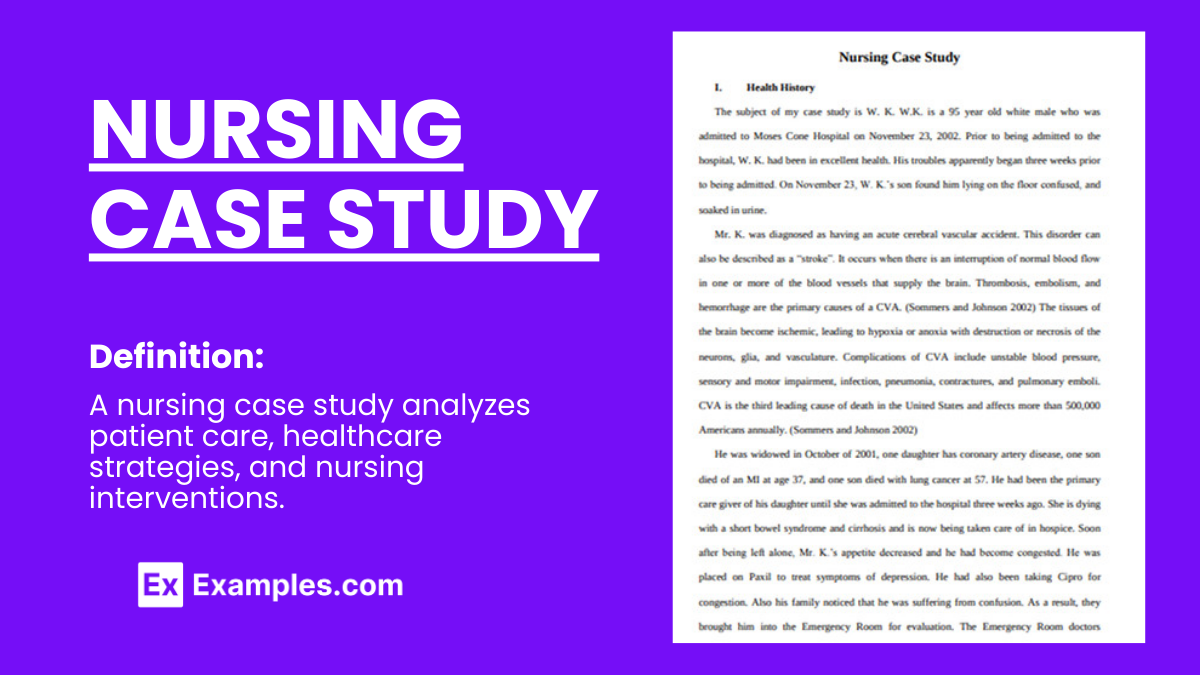
ScienceDirect posted a nursing ethics case study where an end-stage prostate cancer patient, Mr. Green, confided to nursing staff about his plan to commit suicide. The patient asked the nurse to keep it a secret. The ethical problem is whether the nurse should tell the health care team members about the patient’s thought without his permission. The best ethical decision for this nursing case study was to share this critical information with other health care professionals, which was the action the nurse took. The team adhered to the proper self-harm and suicide protocol. The appropriate team performed a palliative therapy. As a result, the patient didn’t harm himself and died peacefully a few months after he was discharged.
What Is a Nursing Case Study? A nursing case study is a detailed study of an individual patient. Through this type of research, you can gain more information about the symptoms and the medical history of a patient. It will also allow you to provide the proper diagnoses of the patient’s illness based on the symptoms he or she experienced and other affecting factors. Nursing students usually perform this study as part of their practicum, making it an essential experience because, through this research methodology , they can apply the lessons they have learned from school. The situation mentioned above was an excellent example of a nursing case study.
Nursing Case Study Format
1. introduction.
Purpose: Briefly introduces the case study, including the main health issue or condition being explored. Background: Provides context for the patient scenario, outlining the significance of the case in nursing practice. Objectives: Lists the learning objectives or goals that the case study aims to achieve.
2. Patient Information
Demographics: Age, gender, ethnicity, and relevant personal information. Medical History: Past medical history, including any chronic conditions, surgeries, or significant health events. Current Health Assessment: Presents the patient’s current health status, including symptoms, vital signs, and results from initial examinations.
3. Case Description
Clinical Presentation: Detailed description of the patient’s presentation, including physical examination findings and patient-reported symptoms. Diagnostic Findings: Summarizes diagnostic tests that were performed, including lab tests, imaging studies, and other diagnostic procedures, along with their results. Treatment Plan: Outlines the initial treatment provided to the patient, including medications, therapies, surgeries, or other interventions.
4. Nursing Care Plan
Nursing Diagnoses: Identifies the nursing diagnoses based on the assessment data. Goals and Outcomes: Establishes short-term and long-term goals for the patient’s care, including expected outcomes. Interventions: Describes specific nursing interventions planned or implemented to address each nursing diagnosis and achieve the stated goals. Evaluation: Discusses the effectiveness of the nursing interventions, including patient progress and any adjustments made to the care plan.
5. Analysis
Critical Analysis: Analyzes the case in depth, considering different aspects of patient care, decision-making processes, and the application of nursing theories and principles. Reflection: Reflects on the nursing practice, lessons learned, and how the case study has impacted the understanding and application of nursing knowledge.
6. Conclusion
Summary: Provides a concise summary of the key points from the case study, including the patient outcome and the nursing care impact. Implications for Practice: Discusses the implications of the case for nursing practice, including any changes to practice or policy that could improve patient care. Recommendations: Offers recommendations for future care or areas for further study based on the case study findings.
Examples of Nursing Case Study
Management of Acute Myocardial Infarction (AMI) Introduction: A 58-year-old male with a history of hypertension and smoking presents to the emergency department with chest pain. This case study explores the nursing management for patients with AMI. Patient Information: Demographics: 58-year-old male, smoker. Medical History: Hypertension, no previous diagnosis of heart disease. Current Health Assessment: Reports severe chest pain radiating to his left arm, sweating, and nausea. Case Description: Clinical Presentation: Patient appeared in distress, clutching his chest. Diagnostic Findings: ECG showed ST-elevation in anterior leads. Troponin levels were elevated. Treatment Plan: Immediate administration of aspirin, nitroglycerin, and morphine for pain. Referred for emergency coronary angiography. Nursing Care Plan: Nursing Diagnoses: Acute pain related to myocardial ischemia. Goals: Relieve pain and prevent further myocardial damage. Interventions: Monitoring vital signs, administering prescribed medications, and providing emotional support. Evaluation: Pain was managed effectively, and the patient was stabilized for angiography. Analysis: The timely nursing interventions contributed to stabilizing the patient’s condition, showcasing the critical role nurses play in acute care settings. Conclusion: This case highlights the importance of quick assessment and intervention in patients with AMI, emphasizing the nurse’s role in pain management and support.
Managing Type 1 Diabetes in a Pediatric Patient Introduction: A 10-year-old female diagnosed with type 1 diabetes presents for a routine check-up. This case study focuses on the nursing care plan for managing diabetes in pediatric patients. Patient Information: Demographics: 10-year-old female. Medical History: Diagnosed with type 1 diabetes six months ago. Current Health Assessment: Well-controlled blood glucose levels, but expresses difficulty with frequent insulin injections. Case Description: Clinical Presentation: Patient is active, engaging in school activities but struggles with diabetes management. Diagnostic Findings: HbA1c is 7.2%, indicating good control. Treatment Plan: Insulin therapy, carbohydrate counting, and regular blood glucose monitoring. Nursing Care Plan: Nursing Diagnoses: Risk for unstable blood glucose levels. Goals: Maintain blood glucose within target range and increase patient comfort with diabetes management. Interventions: Education on insulin pump use, dietary advice, and coping strategies. Evaluation: Patient showed interest in using an insulin pump and understood dietary recommendations. Analysis: This case emphasizes the importance of education and emotional support in managing chronic conditions in pediatric patients. Conclusion: Effective management of type 1 diabetes in children requires a comprehensive approach that includes education, technological aids, and psychological support.
Elderly Care for Alzheimer’s Disease Introduction: An 82-year-old female with Alzheimer’s disease presents with increased confusion and agitation. This case study examines the complexities of caring for elderly patients with Alzheimer’s. Patient Information: Demographics: 82-year-old female. Medical History: Alzheimer’s disease, osteoarthritis. Current Health Assessment: Increased confusion, agitation, and occasional aggression. Case Description: Clinical Presentation: Patient exhibits signs of advanced Alzheimer’s with memory loss and disorientation. Diagnostic Findings: Cognitive tests confirm the progression of Alzheimer’s. Treatment Plan: Non-pharmacological interventions for agitation, memory aids, and safety measures in the home. Nursing Care Plan: Nursing Diagnoses: Impaired memory related to Alzheimer’s disease. Goals: Reduce agitation and prevent harm. Interventions: Use of calming techniques, establishing a routine, and environmental modifications. Evaluation: Agitation was reduced, and the patient’s safety was improved through environmental adjustments. Analysis: The case underscores the need for tailored interventions to manage Alzheimer’s symptoms and improve the quality of life for the elderly. Conclusion: Nursing care for Alzheimer’s patients requires a multifaceted approach focusing on safety, symptom management, and patient dignity.
Nursing Case Study Topics with Samples to Edit & Download
- Telehealth Nursing
- Mental Health and Psychiatric Nursing
- Geriatric Nursing Care
- Palliative and End-of-Life Care
- Pediatric Nursing
- Emergency and Critical Care Nursing
- Chronic Disease Management
- Nursing Ethics and Patient Rights
- Infection Control and Prevention
- Oncology Nursing
- Nursing Leadership and Management
- Cultural Competence in Nursing
- Substance Abuse and Addiction Nursing
- Technological Innovations in Nursing
- Nursing Education and Training
Nursing Case Study Examples & Templates
1. nursing case study template.
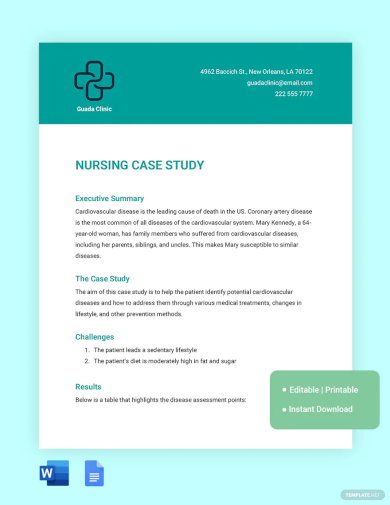
2. Free Nursing Student Care Plan Template

3. Nursing Action Case Study Example

4. Hospital Nursing Care Case Study Example
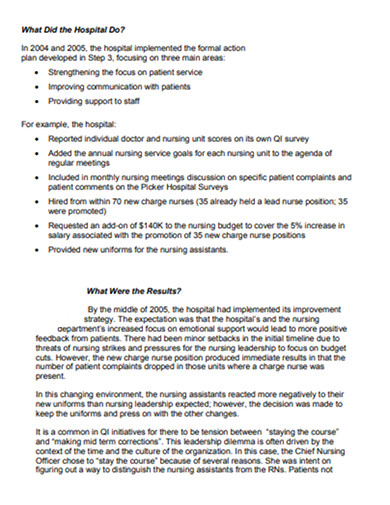
5. Printable Nursing Health Case Study Example
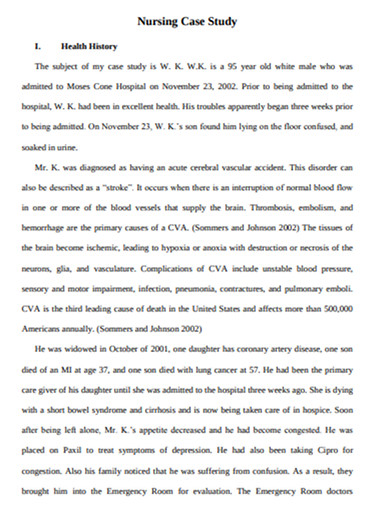
professays.com
6. Fundamentals of Nursing Case Study Example

secure-ecsd.elsevier.com
7. Sample Nursing Case Study Example

caresearch.com.au
8. Nursing Research Case Study Example
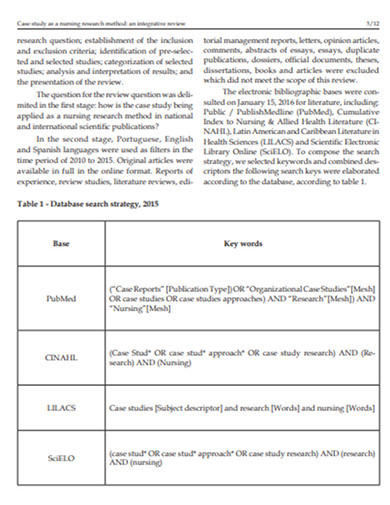
9. Standard Nursing Case Study Example
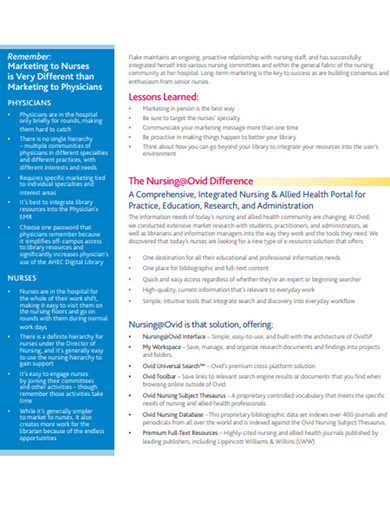
resourcecenter.ovid.com
10. Nursing Disability Case Study Example
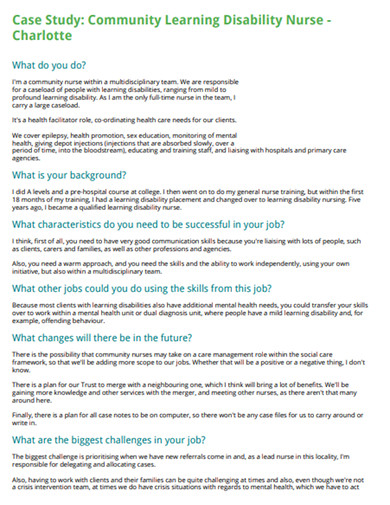
careerswales.com
11. Nursing care Patients Case Study Example
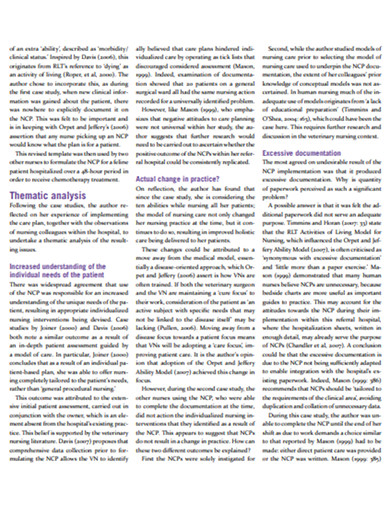
12. School of Nursing Case Study Example
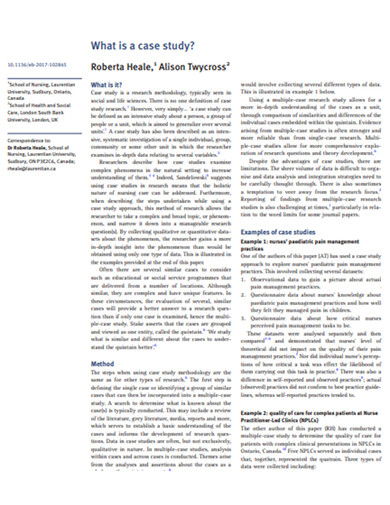
ebn.bmj.com
13. Evaluation of Nursing Care Case Study Example
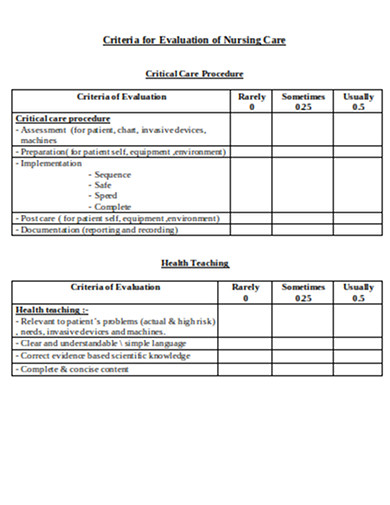
philadelphia.edu
Nursing Case Study Segments
Typically, a nursing case study contains three main categories, such as the items below.
1. The Status of a Patient
In this section, you will provide the patient’s information, such as medical history, and give the current patient’s diagnosis, condition, and treatment. Always remember to write down all the relevant information about the patient. Other items that you can collect in this stage are the reasons for the patient to seek medical care and the initial symptoms that he or she is experiencing. After that, based on the gathered information, you will explain the nature and cause of the illness of the patient.
2. The Nursing Assessment of the Patient
In this stage, you will need to prepare your evaluation of the patient’s condition. You should explain each observation that you have collected based on the vital signs and test results. You will also explain each nursing diagnosis that you have identified and determine the proper nursing care plan for the patient.
3. The Current Care Plan and Recommendations
Describe the appropriate care plan that you can recommend to the patient based on the diagnosis, current status, and prognosis in detail, including how the care plan will affect his or her life quality. If needed, you can also evaluate the patient’s existing care plan and give recommendations to enhance it. It is also crucial to cite relevant authoritative sources that will support your recommendations .
Objectives of Nursing Case Study
Nursing case studies are integral educational tools that bridge theoretical knowledge with practical application in patient care. They serve several key objectives essential for the development of nursing students and professionals. Here are the primary objectives of nursing case studies:
1. Enhance Critical Thinking and Clinical Reasoning
Case studies encourage nurses to analyze complex patient scenarios, make informed decisions, and apply critical thinking skills to solve problems. They simulate real-life situations, requiring nurses to evaluate data, consider multiple outcomes, and choose the best course of action.
2. Improve Diagnostic Skills
Through the detailed analysis of patient information, symptoms, and diagnostic results, nursing case studies help improve diagnostic skills. They allow nurses to practice interpreting clinical data to identify patient conditions and understand the underlying causes of symptoms.
3. Facilitate Application of Theoretical Knowledge
Nursing case studies provide a direct bridge between classroom learning and clinical practice. They offer a practical venue for applying theoretical knowledge about anatomy, physiology, pharmacology, and nursing theories to real-world patient care situations.
4. Promote Understanding of Comprehensive Patient Care
These studies emphasize the importance of holistic care, considering the physical, emotional, social, and psychological aspects of patient well-being. Nurses learn to develop comprehensive care plans that address all facets of a patient’s health.
5. Encourage Reflective Practice and Self-Assessment
Reflecting on case study outcomes enables nurses to evaluate their own decision-making processes, clinical judgments, and actions. This self-assessment promotes continuous learning and professional growth by identifying areas for improvement.
6. Foster Interdisciplinary Collaboration
Case studies often involve scenarios that require collaboration among healthcare professionals from various disciplines. They teach nurses the value of teamwork, communication, and the integration of different expertise to achieve optimal patient outcomes.
7. Enhance Patient Education and Advocacy Skills
By working through case studies, nurses improve their ability to educate patients and families about health conditions, treatment plans, and preventive measures. They also learn to advocate for their patients’ needs and preferences within the healthcare system.
8. Prepare for Real-Life Challenges
Nursing case studies prepare students and new nurses for the unpredictability and challenges of real-life clinical settings. They provide safe, controlled environments to practice responses to emergencies, ethical dilemmas, and complex patient needs without the risk of actual harm.
Steps in Nursing Process
Whether you are handling a patient with schizophrenia, pneumonia, diabetes, appendicitis, hypertension, COPD, etc, you will need to follow specific steps to ensure that you are executing the critical nursing process.
1. Assess the Patient
The first step of the nursing process requires critical thinking skills as it involves gathering both subjective and objective data. Subjective data includes verbal statements that you can collect from the patient or caregiver. In contrast, objective information refers to measurable and tangible data, such as vital signs, height, weight, etc. You can also use other sources of information, such as electronic health records, and friends that are in direct contact with the patient.
2. Diagnose the Patient
This critical step will help you in the next steps, such as planning and implementation of patient care. In this step, you will formulate a nursing diagnosis by applying clinical judgment. As a nurse, the North American Nursing Diagnosis Association (NANDA) will give you an up-to-date nursing diagnosis list, which will allow you to form a diagnosis based on the actual health problem.
3. Plan for a Proper Patient Care Plan
This part is where you will plan out the appropriate care plan for the patient. You will set this goal following the evidence-based practice (EDP) guidelines. The goal you will set should be specific, measurable, attainable, realistic, and timely ( SMART ).
4. Implement the Plan
In this stage, you can execute the plan that you have developed in the previous step. The implementation may need interventions such as a cardiac monitor, medication administration, etc.
5. Evaluate the Results
It is crucial to remember that every time the team does an intervention, you must do a reassessment to ensure that the process will lead to a positive result. You may need to reassess the patient depending on his progress, and the care plan may be modified based on the reassessment result.
Where to find nursing case studies?
Nursing case studies can be found in a variety of academic, professional, and medical resources. Here are some key places to look for nursing case studies:
- Academic Journals : Many academic journals focus on nursing and healthcare and publish case studies regularly. Examples include the “Journal of Clinical Nursing,” “Nursing Case Studies,” and “American Journal of Nursing.”
- University and College Libraries : Many academic institutions provide access to databases and journals that contain nursing case studies. Libraries often have subscriptions to these resources.
- Online Medical Libraries : Websites like PubMed, ScienceDirect, and Wiley Online Library offer a vast collection of nursing and medical case studies.
- Professional Nursing Organizations : Organizations such as the American Nurses Association (ANA) and the National League for Nursing (NLN) often provide resources, including case studies, for their members.
- Nursing Education Websites : Websites dedicated to nursing education, such as Lippincott NursingCenter and Nurse.com, often feature case studies for educational purposes.
- Government Health Websites : The Centers for Disease Control and Prevention (CDC) and the World Health Organization (WHO) sometimes publish case studies related to public health nursing and disease outbreaks.
- Nursing Textbooks and eBooks : Many nursing textbooks and eBooks include case studies to illustrate key concepts and scenarios encountered in practice.
- Online Nursing Forums and Communities : Forums and online communities for nursing professionals may share or discuss case studies as part of their content.
- Conference Proceedings : Nursing and healthcare conferences often include presentations of case studies. Many of these are published in the conference proceedings, which may be accessible online.
Carrying out a nursing case study can be a delicate task since it puts the life of a person at stake. Thus, it requires a thorough investigation. With that said, it is essential to gain intensive knowledge about this type of study. Today, we have discussed an overview of how to conduct a nursing case study. However, if you think that you are having problems with your writing skills , we recommend you to consider looking for an essay writing service from the experts in the nursing department to ensure that the output follows the appropriate writing style and terminology.
Text prompt
- Instructive
- Professional
10 Examples of Public speaking
20 Examples of Gas lighting
- Toggle navigation

L4: Living Lab Learning Library
A virtual resource exchange of teaching practices
NUR 1130 Clinical Assignment case study
Kalliopi Parginos
Nursing/New York City Tech College
Activity Description: Provide a brief description of the activity
Interactive Case study on Type 1 Diabetes with short answers
Learning Goals: What do you aim to achieve with this activity?
Top 5 Ways Nurses Can Improve Critical Thinking Skills Case based approach Practice self-reflection Developing a questioning mind Practice self-awareness in the moment Use a process
Timing: At what point in the lesson or semester do you use this activity? How much classroom time do you devote to it? How much out-of-class time is expected?
The Importance of Enhancing Critical Thinking Behavior Independence of thought Impartiality Perspicacity into Personal and Social Factors Humble Cerebration and Deferral Crisis
Logistics: What preparation is needed for this activity? What instructions do you give students? Is the activity low-stakes, high-stakes, or something else?
review the case study answer the 4 questions Choose the correct answer for two multiple choice questions
Assessment: How do you assess this activity? What assessment measures do you use? Do you use a VALUE rubric? If not, how did you develop your rubric? Is your course part of the college-wide general education assessment initiative?
Grade the questions Plan to include it future clinical sessions either on the pre or post conference with the students
Reflection: How well did this activity work in your classroom? Would you repeat it? Why or why not? What challenges did you encounter, and how did you address them? What, if anything, would you change? What did students seem to enjoy about the activity?
6/6 students completed the questionnaire The case study will be repeated on the fall semester 2024 Plan to incorporate it different interactive case studies Students work as a team
Additional Information: Please share any additional comments and further documentation of the activity – e.g. assignment instructions, rubrics, examples of student work, etc. These can be links to pages or posts on the OpenLab.
Rubric: Critical Thinking Value Rubric was utilized
Please share a helpful link to a pages or post on the OpenLab
Leave a Reply Cancel reply
Your email address will not be published. Required fields are marked *
Notify me of follow-up comments by email.
Notify me of new posts by email.
The OpenLab at City Tech: A place to learn, work, and share
The OpenLab is an open-source, digital platform designed to support teaching and learning at City Tech (New York City College of Technology), and to promote student and faculty engagement in the intellectual and social life of the college community.

New York City College of Technology | City University of New York
Accessibility
Our goal is to make the OpenLab accessible for all users.
Learn more about accessibility on the OpenLab
Creative Commons
- - Attribution
- - NonCommercial
- - ShareAlike

© New York City College of Technology | City University of New York

IMAGES
VIDEO
COMMENTS
Case study is a research methodology, typically seen in social and life sciences. There is no one definition of case study research.1 However, very simply… 'a case study can be defined as an intensive study about a person, a group of people or a unit, which is aimed to generalize over several units'.1 A case study has also been described as an intensive, systematic investigation of a ...
A nursing case study is a natural or imagined patient scenario designed to test the knowledge and skills of student nurses. Nursing case study assignments usually focus on testing knowledge and skills in areas of nursing study related to daily nursing practice.
Case Study: Joint Pain, Rash, Hair Loss - What's Going On? by SafetyNurse1968, BSN, MSN, PhD. A new case study in which R.W. presents to her PCP with a cough, mild fever, joint stiffness and pain and a history of rashes, anemia and hair loss. Critical.
A nursing case study can be described as a student-learning activity that tells a story about a patient/family (clinical scenario) and requires thinking to translate knowledge into nursing practice through the use of questions related to the story (Oermann & Gaberson, 2017; Ignatavicius, 2019). Billings and Halstead (2020) state that completing ...
To write a case study analysis in nursing, follow these steps: Introduction: Begin with a brief overview of the patient, the diagnosis, and the purpose of the case study. Patient History: Present the patient's background, including age, gender, medical history, and any relevant social or family history.
Writing a nursing case study analysis usually takes only a few hours. Reference your case study. After writing your case study, make sure you add all in-text citations if you had not added them already. And when adding them, you should make sure you follow the style/format recommended in the assignment prompt (usually APA or Harvard style).
Nursing Case Study Your patient is a 48-year-old premenopausal, multiparous female suffering from urinary stress incontinence. She has been doing pelvic floor exercises on her own, following instructions on a patient education handout she got from her doctor, to improve the symptoms, but she is not happy with the results and isn't sure if she is doing the exercises correctly.
Case study is a research methodology, typically seen in social and life sciences. There is no one definition of case study research.1 However, very simply… 'a case study can be defined as an intensive study about a person, a group of people or a unit, which is aimed to generalize over several units'.1 A case study has also been described as an intensive, systematic investigation of a ...
The term case study is well known in the nursing profession as a teaching strategy to analyze a patient's clinical case. Case study research is less employed and is defined similarly by all three methodologists as a research approach that focuses on one phenomenon, variable or set of variables, thing, or case occurring in a defined or bounded ...
Critical Care Nursing Case Study Examples . Critical care nursing demands swift decision-making, advanced technical skills, and the ability to provide intensive care to acutely ill patients. Our critical care nursing case studies encompass a range of high-acuity scenarios, including trauma, cardiac emergencies, and respiratory distress.
A nursing case study is an in-depth examination of a situation that a nurse encounters in her daily practice. The case study offers a safe way for the nurse to apply theoretical and actual knowledge to an actual or potential patient scenario.
Nursing ethics case study. Case study of a patient: Assessment and treatment plan. Cecile case study: Mrs. J. Nursing power in the emergency department: Case study. Heart failure case study: Mrs. J. Application of ethics in nursing: Case study. Sudden visual impairment: Case study.
'Case-study is the study of the particularity and complexity of a single case, coming to understand its activity within important circumstances.' Stake (1995, p.xi) 'Case-study is an 'intensive study of a single unit for the purpose of understanding a larger class of units' Gerring (2004) 'Case-study is an empirical inquiry that:
Nursing Case Studies with Answers example (sample) Below is an example of a nursing case study sample created by the Carepatron team. This sample illustrates a structured framework for documenting patient cases, outlining nursing interventions, and providing corresponding answers to guide learners through the analysis process. Feel free to ...
Challenges nurses to evaluate current care or care delivery. Promotes critical thinking. Sparks ideas to improve patient care. By reviewing case studies with qualitative and quantitative research, nurses gain the skills to evaluate evidence-based practice (EBP) in a real-world situation. EBP integrates a three-pronged approach of using current ...
Health Case Studies is composed of eight separate health case studies. Each case study includes the patient narrative or story that models the best practice (at the time of publishing) in healthcare settings. Associated with each case is a set of specific learning objectives to support learning and facilitate educational strategies and evaluation.
Based on the review of the literature for my dissertation, to successfully develop nurse thinking using case studies I identified the following strategies. The more case studies, the better! Repetition of case studies improved clinical decision making (Yang et al., 2019), a key component of safe practice and the upcoming Next Generation NCLEX!
Click on a case study below to view in our Nursing Case Study Examples course which holds all of our 40+ nursing case studies with answers. Acute Kidney Injury Nursing Case Study. Continue Case Study. Cardiogenic Shock Nursing Case Study. Continue Case Study. Breast Cancer Nursing Case Study. Continue Case Study. Respiratory Nursing Case Study.
NGN Case Study Sample Questions and Answers. First, let's take a look at our case study summary below: Case Study Summary: A 68-year-old male is admitted with shortness of breath. He reports difficulty breathing with activity, lying down, or while sleeping. He states that in order to "breathe easier," he has had to sleep in a recliner for ...
Case study is a research methodology, typically seen in social and life sciences. There is no one definition of case study research.1 However, very simply... 'a case study can be defined as an intensive study about a person, a group of people or a unit, which is aimed to generalize over several units' .1 A case study has also been described ...
Benefits. Reading a case study and coming up with a diagnosis is a good way for nursing students to test the knowledge they've acquired in the classroom in a more realistic, clinical way. Writing case studies is also a useful learning tool; it forces students to reflect on the entire course of treatment for a patient, ranging from obtaining ...
A nursing case study is a detailed study of an individual patient, which allows you to gain more information about the symptoms and the medical history of a patient and provide the proper diagnoses of the patient's illness based on the symptoms he or she experienced and other affecting factors. Learn more about this type of research by reading the article.
the case study is presented in a classroom or clinical setting. The questions guide students through the application of the nursing process to the case study scenario. This case study can be completed synchronously or asynchronously, by an individual student or by a group. This case study can be completed in the classroom, in a clinical group, or
The case study will be repeated on the fall semester 2024 Plan to incorporate it different interactive case studies Students work as a team. Additional Information: Please share any additional comments and further documentation of the activity - e.g. assignment instructions, rubrics, examples of student work, etc.
" Celebrating Australian nurses who are pioneering the response to climate change: A compilation of case studies [Letter]." Contemporary Nurse , ahead-of-print(ahead-of-print), pp. 1-2 Disclosure statement